

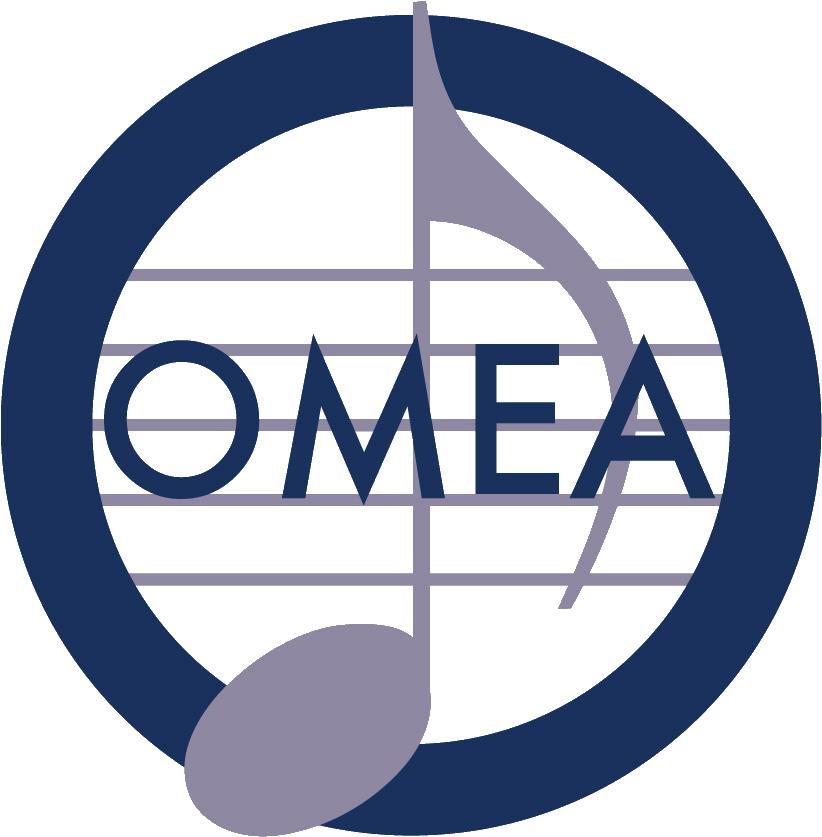
December 2022/January 2023 Vol. XC, No. 2
The Official Publication of the Ohio Music Education Association
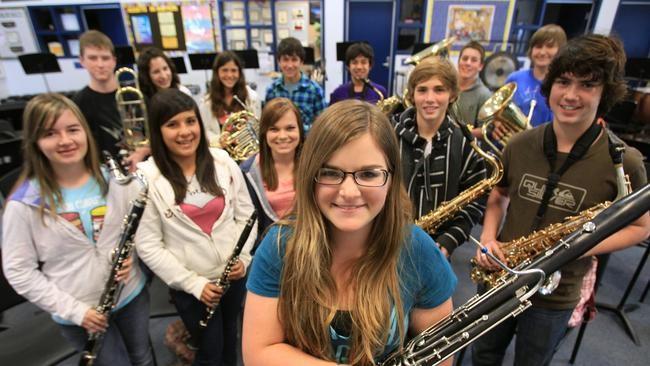



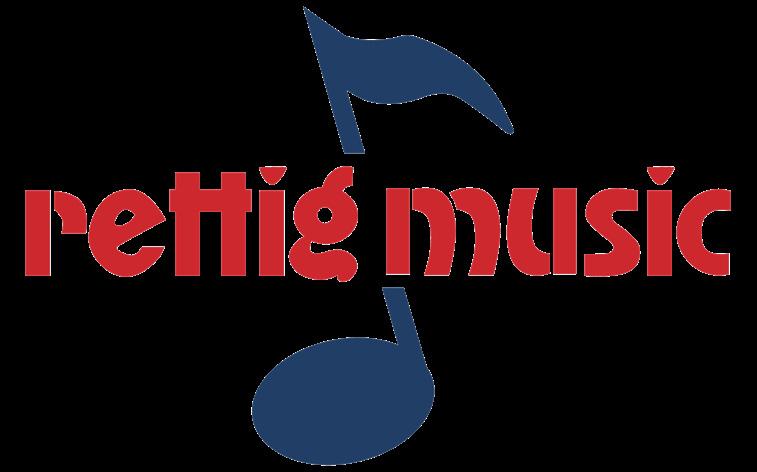




CELEBRATING 75 YEARS! • Band & Orchestra Rentals Fast & affordable | Rent in store or online Director-approved items | Free school delivery* • Expert Woodwind, Brass, Percussion & String Repairs Highly skilled technicians | Ultrasonic cleaning Master luthier | Student-line to professional • New/Used Instrument Sales Step Up & Professional payment plans • Band & Orchestra Supplies School-specific shopping in store or online Free school delivery* • Sheet Music, Methods & Folios Band, Orchestra, Choral, Jazz | New issue Extensive selection • Shoes, Gloves, Guard & More! Discount pricing | Easy ordering Defiance • Lima • Toledo Westlake • Brunswick • Dublin 1-800-52-MUSIC rettigmusic.com SHOP & RENT ONLINE FREE SCHOOL DELIVERY! *Service area only.

























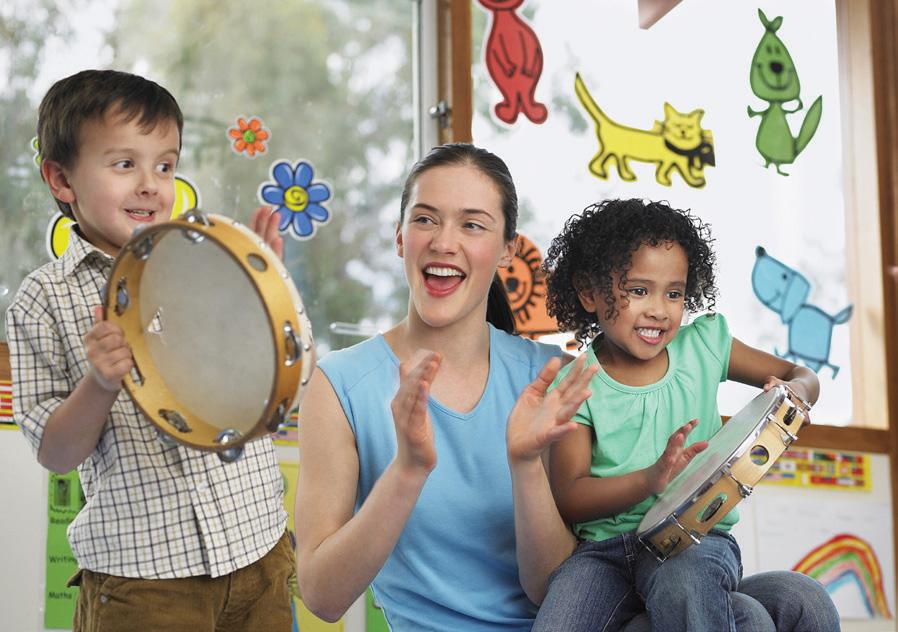

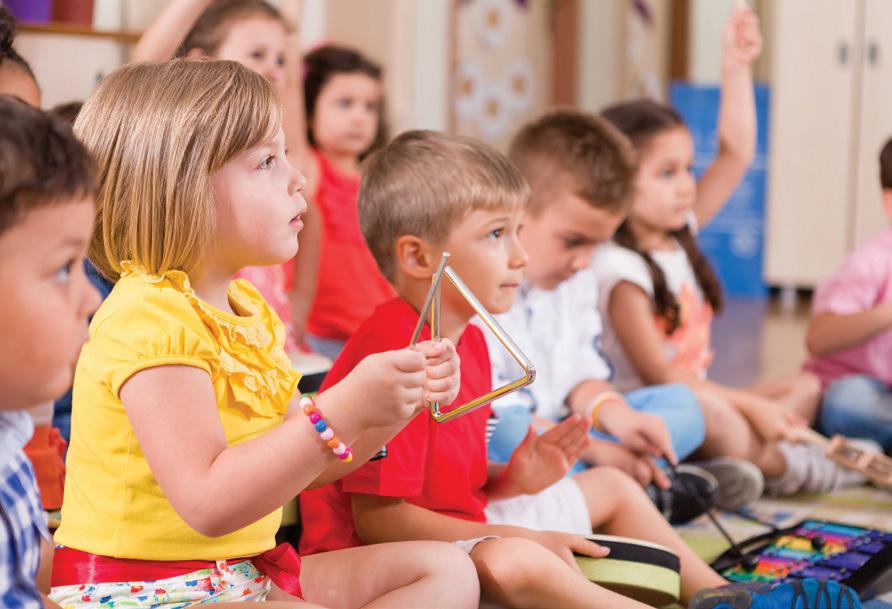

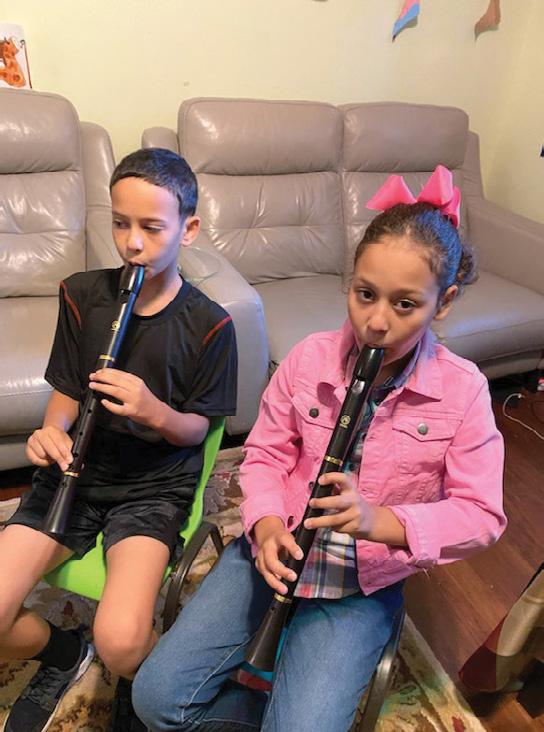

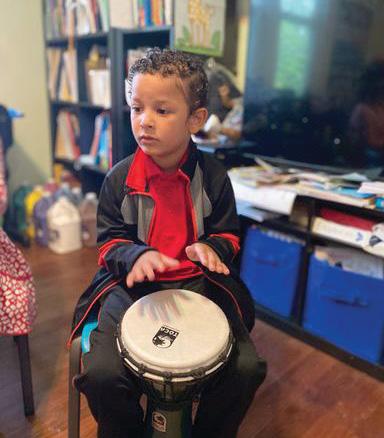






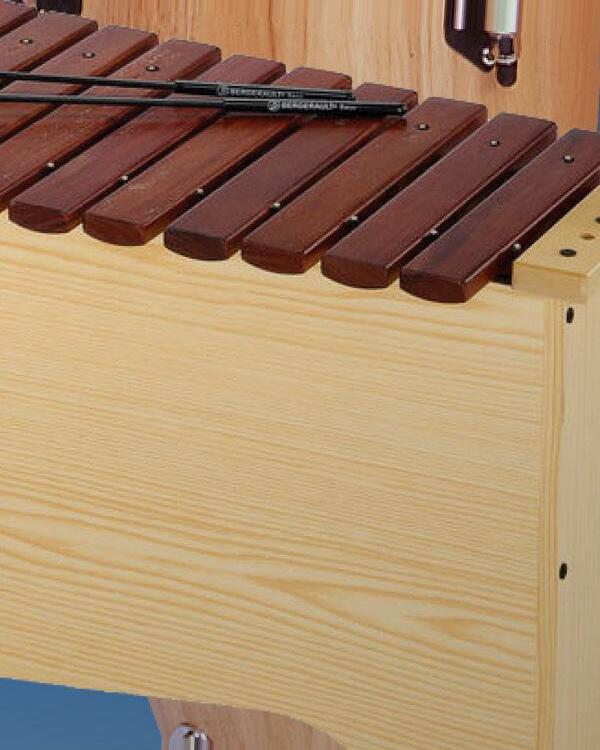






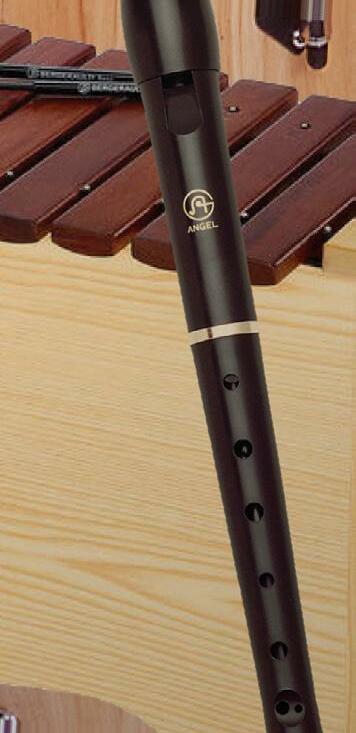

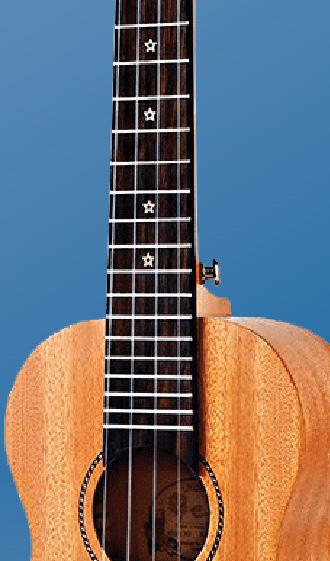

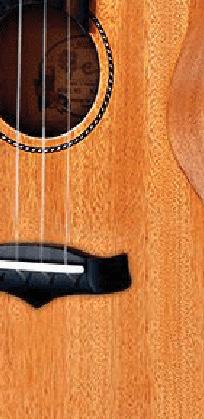



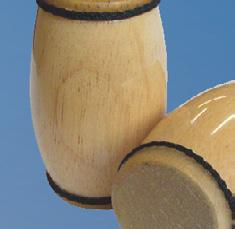














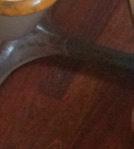






































800.443.3592 PERIPOLE.COM PARTNERS IN MUSIC EDUCATION® EDUCATOR DISCOUNTS AVAILABLE Exclusive Direct Distributors: PERCUSSION Or Instruments Halo® Recorders
OMEA OFFICE
P.O. BOX 1357 Medina, OH 44258 www.omea-ohio.org
JAY WARDESKA
Executive Director executive_director@omea-ohio.org
WILLIAM WITTMAN
Director of Business & Trade Show Operations business_director@omea-ohio.org
AMY ANNICO Director of Media & Publications media_director@omea-ohio.org
GREGORY TAYLOR
Director of Technology technology_director@omea-ohio.org
MARK HENSLER
Director of Professional Development & Conference Management pd_director@omea-ohio.org

WILLIAM THOMAS
Director of Adjudications adjudications_director@omea-ohio.org
DANE NEWLOVE
Director of Adjudicated Event Materials and Awards ae_materials_director@omea-ohio.org
NICHOLAS TURON Assistant Technology Director technology_assistant@omea-ohio.org
Editor: Shawn Reynolds editor_of_triad@omea-ohio.org
Design/Production: Amy Annico
Director of Media and Publications media_director@omea-ohio.org
Advertising: Bill Wittman
Director of Business & Trade Show Operations business_director@omea-ohio.org
OMEA TRUSTEES
DANIEL RUCKMAN President president@omea-ohio.org
BRIAN STEVENS
President-Elect president_elect@omea-ohio.org
ANN USHER Immediate Past-President past_president@omea-ohio.org
JODI SMITH Secretary secretary@omea-ohio.org
SHAWN REYNOLDS Editor of TRIAD editor_of_triad@omea-ohio.org
BRANDON DUVALL Treasurer treasurer@omea-ohio.org
OCMEA OFFICERS
ALYSE HANCOCK-PHILLIPS
OCMEA President ocmea_president@omea-ohio.org
MEREDITH BISCHOFF
OCMEA President-Elect ocmea_president_elect@omea-ohio.org
COURTNEY COX OCMEA Secretary ocmea_secretary@omea-ohio.org
TATE STEWART Membership Chair
BETHANY HASKELL Communications Director
OMEA is an Affiliate of NAfME National Association for Music Education www.nafme.org
ALLIED ORGANIZATIONS
Ohio Alliance for Arts Education www.oaae.net
Ohio Arts Council www.oac.state.oh.us
Ohio Choral Directors Association www.ohiocda.org
Ohio String Teachers Association www.ohiostringteachers.org
Jazz Education Connection of Ohio www.jecohio.org
2 TRIAD
Official Publication
Association
The
of the Ohio Music Education
Volume XC, No. 1
TRIAD, the Official Publication of the Ohio Music Education Association, is written for music educators, college students preparing for a career in music education, and others who are interested in music education in both general and specialized areas. TRIAD is now a digital publication that can be found online at www.omea-ohio.org three times a year - with Oct/Nov, Dec/Jan, and April/May issues. All news releases should be sent to the editor. All news releases received by the editor will be considered on the basis of news, value, and timeliness to the music education profession in the state of Ohio. All advertising space and business inquiries should be directed to the OMEA Director of Business. An Insertion Order or a Space Reservation Form must be submitted for ads to be printed. TRIAD reserves the right to reject any advertisement. The statements of article authors and/or advertisers are not necessarily those of the magazine or association, and the right to refuse any article/advertisement is reserved. OMEA is not responsible for the URL linking in this publication in terms of destinations or operation. All links are tested in advance for validity to intended sources, but potential distortions may occur beyond the control of OMEA and/or the URL link source. OhioMEA Online Publication Policy on Post-Publication Changes - The Ohio Music Education Association places the highest importance in the integrity of our publications posted online. We realize that despite the competent efforts of the editor, authors, contributors, advertisers, and OMEA staff, posted content may have errors or

desired alterations identified after the proofing process is completed. Once a publication is posted online, it will be considered as ‘final’ and no further changes, updates, or corrections will be made. The electronic archiving of our publications for official record is taken seriously and all online publications should be considered equitable to print venues, without alterable possibilities once posted for public viewing. TABLE OF CONTENTS DECEMBER 2022/JANUARY 2023 3 FROM THE DESK OF... 5 FROM THE EXECUTIVE DIRECTOR - JAY WARDESKA 8 FROM THE EDITOR - SHAWN REYNOLDS 10 FROM THE PRESIDENT - DANIEL RUCKMAN FEATURE ARTICLE 20 NAVIGATING OTES PART 2 - DR. RACHAEL FLEISCHAKER SUPPORT 12 CORPORATE/INSTITUTION PARTNERS 19 OFME SUPPORT FORM 59 OFME STRIKE-A-CHORD GOLF OUTING 2022 SPONSORS 60 OFME STRIKE-A-CHORD GOLF OUTING 2023 INFO REPORTS & UPDATES 37 OAC - JARRED SMALL 40 OCDA - DOUG O’NEAL 42 T:ME - MICHELLE LEASOR 45 HIGHER EDUCATION 2023 OMEA PDC ANNOUNCEMENTS 49 CLINICIANS 50 INDUSTRY SERVICE AWARD 53 PERFORMING ENSEMBLES 54 EXHIBITORS 57 RESEARCH POSTER SESSIONS





SOLICH PIANO AuthorizedYAMAHAPianoDealer forOHandWesternPA www.SolichMusic .com High-quality Upright Pianos Concer t and Baby Grand Pianos Clavinova Digital Pianos Yamaha Hybrid, TransAcoustic & Silent Pianos Yamaha Disklavier Reproducing Pianos Outreach@SolichMusic.com SOLICHPIANOCLEVELAND 216-831-1044 • Beachwood, OH 44122 27730 Chagrin Boulevard SOLICHPIANOPITTSBURGH 1686 Route 228, Suite 107 • Cranberr y Twp, PA 16066 724-506-6370 4194 Easton Gateway Dr • Columbus, OH 43219 SOLICHPIANOCOLUMBUS 614-888-3441 New and used pianos. Special savings for educators and institutions!
FROM THE EXECUTIVE DIRECTOR JAY WARDESKA
OMEA has embarked on a three-stage plan designed to strengthen music education in Ohio by strengthening OMEA as Ohio’s professional music education association. We are progressing through the first phase of this plan which is a period of restoration. In the first phase of this plan, our goal has been a simple one—restoring the opportunities and services of the organization to a pre-pandemic level. One only need to look around at the great teaching, strong performances, and event participation to see that music programs are once again providing high quality experiences for students despite the challenges left behind by the impact of COVID protocols. As is our history, we are coming together as a music education community to provide the best for the students of Ohio.
VISION OMEA
There are three phases to our vision for OMEA and its future. As stated earlier, we are progressing rapidly through phase one—restoration. Phase two is one of refinement and retooling the services we now offer for our membership in ways that provide greater access, diversify opportunities, and provide services to the broadest possible demography of our music education community. As native Ohioans know, we are a vastly diverse state, and with that diversity comes a diverse set of needs from our music education community. The second phase of
our plan is to meet those needs and strive to support music educators in every single school system in Ohio through our existing infrastructures. This is going to take patience, a willingness to embrace new ideas, and acceptance that not every one of our current mechanisms are suited for every situation.

The third phase of this plans is about reimagining OMEA. In this phase, we want to conceive the ideal models for performance opportunities, professional development, events, and services and then roll up our sleeves and find ways to make these models become realities. In this phase, we intend to create new initiatives, events, and opportunities that serve all of Ohio’s populations and all of the diversity of our music education programs. With positivity, determination, and engagement we will succeed in creating an association that broadly supports our constitutional mission statement to “establish throughout the state a broad, diversified program of activity for the advancement of music education.” It will take each and every one of us to meet this challenge, but it will be met.
MENTORSHIP
Of the challenges ahead, one of the most significant is the decline in music teacher retention and the decline in those choosing music education as a career path. Research seems to indicate that contrary to popular narrative, salary is not the most signifi-
DECEMBER 2022/JANUARY 2023 5
cant mitigating factor. Several research studies have pointed to feeling unsupported as one of the top reasons that teachers choose to leave teaching. While this is a problem throughout the education system, it is a problem that music teachers are uniquely positioned to combat. A 1992 survey by Odell and Ferraro in the Journal of Teacher Education reported that the emotional support received by mentors was the strongest factor in reducing teacher attrition.
Within days of securing my first job and moving into my first post-college apartment, nearly every one of the band directors in the county in which I began teaching reached out and introduced themselves to me. Some of these same colleagues even showed up at my first rehearsals and offered to lend a hand. This made me feel welcomed, supported, and part of the community. I was inexperienced. I knew no one in the area, and I needed this support both emotionally and professionally. I know many of my contemporaries can tell similar stories whether band, choir, general music, or orchestra teachers. As an organization our sense of community and mutual support have been one of the hallmarks of our history and key to our longevity.
OMEA is embarking on a mentorship project that we hope will strengthen and expand available resources and support for teachers at all points in their career. However, this practice is not one that requires organizational oversight. We can all be mentors, supporters, and friends for one another. If you are an experienced teacher, please reach out to those teachers who are new to your area. Introduce yourself and become a friendly face and resource. If you are new to the profession or new to an area, reach out to those who are established. Welcome overtures of support when they are extended to you. Throughout our history, we have faced many challenges to music education, and throughout each of these challenges we have come out stronger on the other side. I believe it has been because through thick and thin, we did it together.
GET INVOLVED
Gandhi is quoted as saying “the best way to find yourself is to lose yourself in service to others.” In our busy world, it is hard to carve out time to serve others, but it is still an essential truth that it is a rewarding use of your time. Like many organizations, OMEA is struggling to find the next generation of selfless servants. We are a people driven organization whose mission is realized through the generosity and engagement of its members. We need adjudicators. We need volunteers. We need leaders. It is not necessary to give all of your time to a particular ask, but it is necessary for each of us to give a little of our time to support the passion for music education that brought us into this career.
I hope that each member will consider being part of the “revival” of selfless service in our organization. Together we are going to build the brightest possible future for music education in Ohio.
Jay Wardeska serves as the Executive Director of OMEA. He has served OMEA in a variety of leadership roles including District President, All-State Ensembles Chair, All-State Task Force Chair, and Adjudicated Events Chair. He also served as an adjudicator for solo and ensemble, large group, and marching band. Currently a PhD Candidate at The Ohio State University, he holds degrees from Kent State University (M.M.) and the University of Mount Union (B.M.E.). Jay taught music in the State of Ohio for over 30 years and was named the 2013 National Band Director of the Year by the National Association for Music Education (NAfME) and the U.S. Army Band. Additional acknowledgements include membership in the NAfME U.S. Army All-American Band Directors Academy, Grammy Quarterfinalist for Music Educator of the Year, Medina County Arts Council Service to the Arts Award, the National Band Association Citation of Excellence, and the National Excellence in Teaching Award. He is also a Martha Holden Jennings Foundation Scholar.
6 TRIAD
Welcome Back To School, Teachers!
Music Education Starts Here.
We Hope to See You All at This Year’s OMEA Conference! www.musiciselementary.com info@musiciselementary.com / www.facebook.com/MusicIsElementary / 1-800-888-7502 We wish all of our home state’s teachers a successful and safe 2022-2023 school year. Visit Our Website for the Latest Back To School Specials, New Products, and Info
FROM
OMEA TRIAD EDITOR
If there is anything we have learned from our experiences over the past 4 years, it’s that more and more keeps being asked of educators. Most concerning is that these commitments are being asked with less and less time to meet unrealistic and growing expectations. We as music teachers we will always do what is best for our students and will ‘get the job done…’ despite being asked to keep more and more plates spinning. But, how many plates can we keep spinning before they crash?
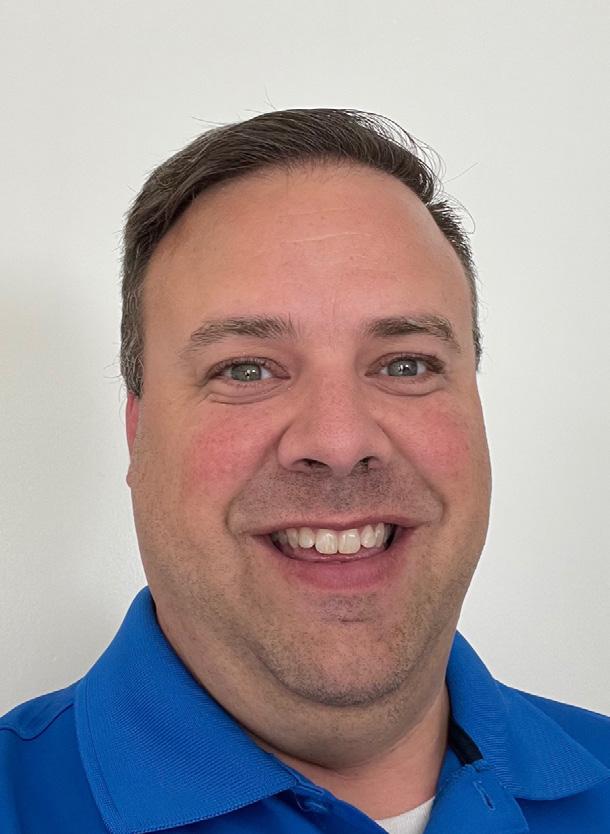
There isn’t a music teacher out there who doesn’t want to be the best teacher they can be for their students. We all want our students to have the memorable experiences we had ourselves. We want it all for our students and our
programs! What happens when we simply cannot give anymore? What will happen if we cannot add another spinning plate? What happens if some plates come crashing down? What exactly is our ‘worst case scenario?’ Sometimes the worst-case scenario may not be as bad as we think it will end up being. Most always, things will work themselves out. Music educators always find a way! It might be our perspective….
We must make the time to take care of ourselves and put our mental, physical, and social well-being and put our families first. Set aside time each day to sit and enjoy a cup of coffee or tea and converse about something other than music or your job. Reconnect with a friend you haven’t talked to in a while over a cup of coffee
“When you change the way YOU look at things, the things you look at change!” ~Unknown TAKE CARE OF YOU …... 8 TRIAD
THE
or a meal. Read a book or simply stare out the window and let your mind wander for a bit. Take care of yourself. Don’t let your well-being be the plate that comes crashing down. Take time to recharge and make ‘you’ a priority. Look at things through a different lens and make sure that your health and well-being is a priority in these stressful times. A plate may come crashing down, and that’s ok. The worst-case scenario may not actually be that bad. Finally, remember that what we get to do every day, despite the negative, is still an incredible gift. Teaching music really is an amazing. Don’t forget to see the trees through the forest and remember the joy our students get from our classes and the joy we get to see in their faces!






Shawn Reynolds teaches instrumental music grades 5-12 as well as middle school music technology and world drumming in the Howland Local Schools. He directs the middle school bands grades 5-8 as well as grades 9-12. He is level 1 certified in the World Music Drumming curriculum and currently teaches a World Music Drumming (WMD)/Music Technology middle school general music course as part of his teaching duties. Shawn has presented at numerous OMEA and PMEA all-state and regional conferences, as well as Internationally as part of the International Double Reed Society (IDRS). He serves as the editor of the Ohio Music Education Association journal, TRIAD and as a member of the OMEA Board of Trustees. In addition, he has been professor of oboe/English horn at Youngstown State University (YSU) since 2015 and previously served as professor of oboe at Westminster College (PA) from 2003 to 2015.

Over 150 years of musical excellence Jazz Studies • Music Composition • Music Education • Music Performance • Music Recording • Musical Theatre • Master of Music Learn More at www.ysu.edu/dana Majors Dana Audition Days Bliss Hall, YSU Day 1 Saturday, January 21 Day 2 Saturday, February 18 Day 3 Saturday, February 25
DECEMBER 2022/JANUARY 2023 9
FROM THE OMEA PRESIDENT DANIEL RUCKMAN
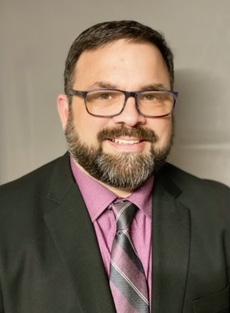
Welcome to the Winter edition of Triad! This issue is packed with outstanding articles that are sure to be helpful and applicable to our members’ teaching and professional growth. Professional development is one of the cornerstones of OMEA membership, and TRIAD has been a significant way that content is delivered. Thank you to Shawn Reynolds, Editor and Amy Annico, Director of Media and Publications for your work. We are fortunate to have such a great resource at our fingertips.
This is also the time of year the excitement builds for our outstanding professional development conference. I invite you to experience the Capital City Conference February 2-4 at the Greater Columbus Convention Center. Whether you are a first time attendee or a “regular” there will be something for you. Mark Hensler, director of Professional Development and his team have assembled another amazing experience. Go to https://www.omeapdc.com/ for full details. You won’t want to miss this event!
Throughout the Fall, Dr. Ann Usher, Brian Stevens, and I have traveled to many of our districts’ meetings and events. The dialogue at these events has been phenomenal and a major focus of our most recent Trustee and State Board meetings. Are there challenges currently in our organization and throughout the field of music education? Absolutely. But with a positive mindset, and open and honest
discussion, we will meet those challenges before us. These solutions start at the local and district level. On November 12th, OMEA held its Fall State Board Meeting, and it was encouraging to see the leaders of every district and region in attendance. It was here that we began the work of addressing those challenges with the tenacity and creativity that defines our profession. While it won’t be easy, I can’t imagine a group of educators better suited for this task.
On my drive home from the State Board meeting my mind was swirling with so many thoughts generated by the discussions we had that day, but one question kept coming to the forefront:Who is your WHO? Who ignited your passion for music? Who encouraged you to pursue the field of music education? Who was the person that believed in you when you questioned yourself? Who pulled you aside and suggested you run for OMEA office or to become an adjudicator? If we were to share those names right now I would bet that we have some of the same people listed. I would also bet that many of your names would be on that list, and if we’ve done well as educators, some of our students will be on that list in the future. Music education is a rich lineage, one that spans generations far into our past and well into the distant future. OMEA is built upon these relationships that have been developed through our passion
10 TRIAD
for music and our common goal of providing those same opportunities to the students who have been entrusted to us. Let’s continue to support each other, honor our history, and work together to provide outstanding musical experiences for our members and their students. Let’s be someone’s WHO.
Dan Ruckman is currently in his twenty sixth year of teaching and serving his twentieth year as the Director of Bands at Coldwater Exempted Village Schools where he directs the 5-12 concert bands, marching and pep band, Cavalier Steel Bands, and music theory. He has served OMEA as a solo and ensemble adjudicator, Past-President of OMEA District 3, and State Secretary. Dan is a member of the National Association for Music Education, Ohio Music Education Association, and Phi Beta Mu. Dan holds a bachelor of music education degree and a master of music in education degree from Bowling Green State University.
OMEA
Contributions to Music Education
BRIAN D. MEYERS, EDITOR
(CONTRIBUTIONS@OMEA-OHIO.ORG)
Did you know that Contributions to Music Education, the research journal of OMEA, is celebrating its 50th year of publication? Since 1972, hundreds of music teacher researchers have presented their work to the wider national and international profession, and is available in print and electronic format in nearly all 50-states, and more than 100-countries abroad. With more than 400 articles in 47 volumes, CME can help you be a better music teacher. Topics over the years have centered on improving the musical experience for students and teachers.
Urban and suburban music programs
Teacher professional identities
Listening in music classrooms
Band, choral, orchestra, general music
Sight-singing attitudes and influences
Early childhood music education
Programming choices and policies
Historical traditions and methods
Best practices in band rooms
Beginning musical instruction
Instrumental and choral programs
Intrinsic and extrinsic motivation
Issues of social justice in schools
Current music technology practices
Innovative ways to teach music
And many, many more
Now is your opportunity to support OMEA and CME by becoming a subscriber to this important publication. Consider joining today, and for a minimal contribution, you can add to your library of resources to increase your own expertise. Subscriptions are now available in print and electronic format. NEW FOR OMEA MEMBERS: electronic access for only $10 a year! For further information and subscription details, please visit our comprehensive website: www.contributions.omea-ohio.org. We look forward to hearing from you!
•
•
•
•
•
•
•
•
•
•
•
•
•
•
•
•
DECEMBER 2022/JANUARY 2023 11
CORPORATE/INSTITUTION PARTNERS
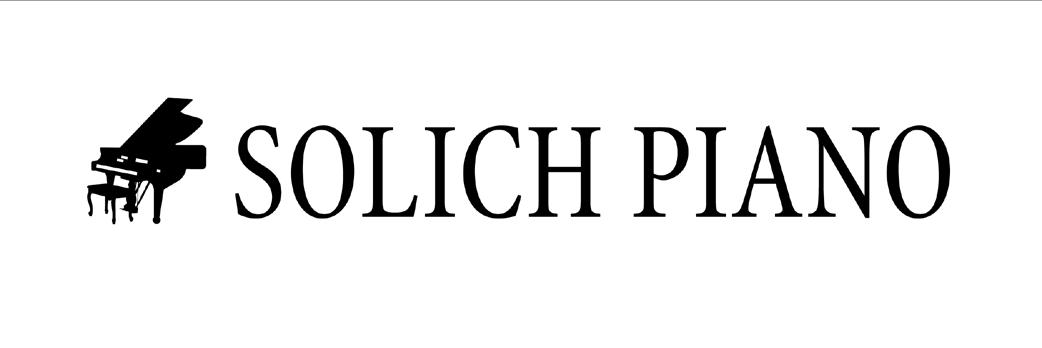
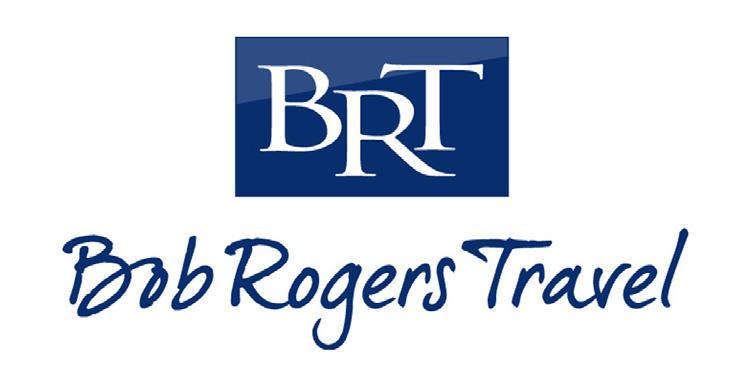

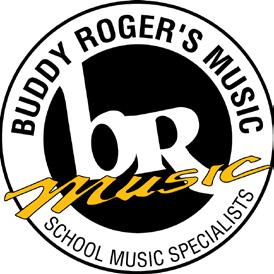
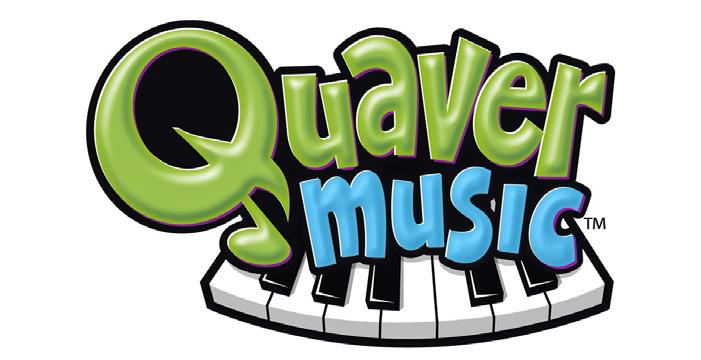

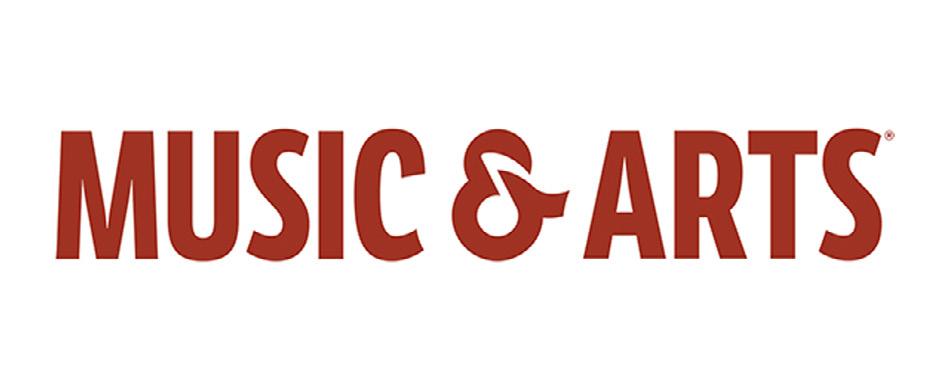

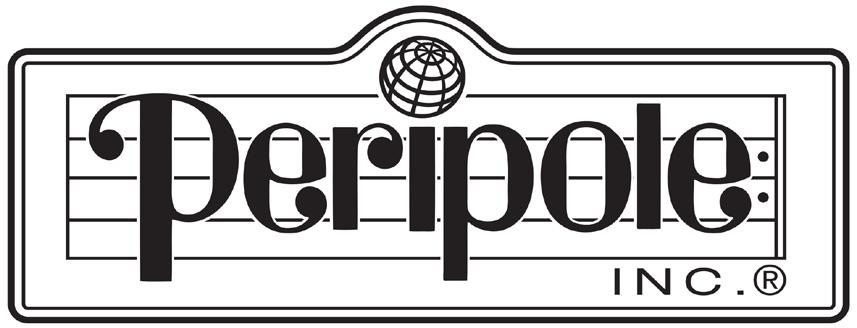
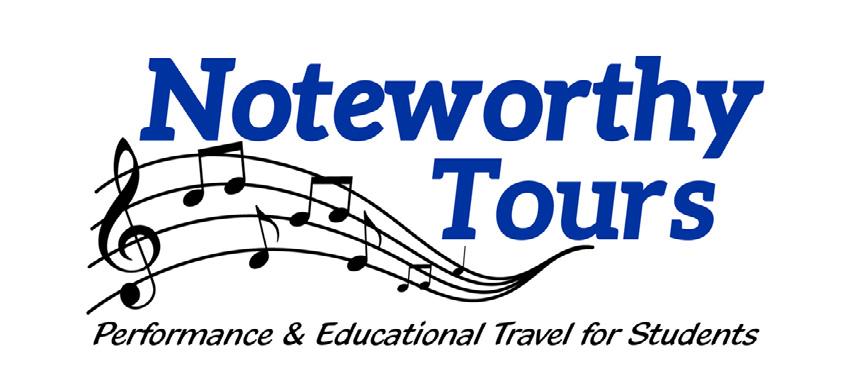

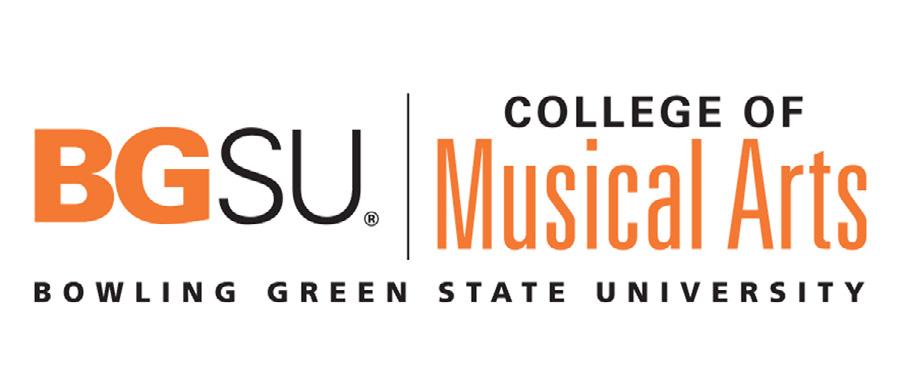
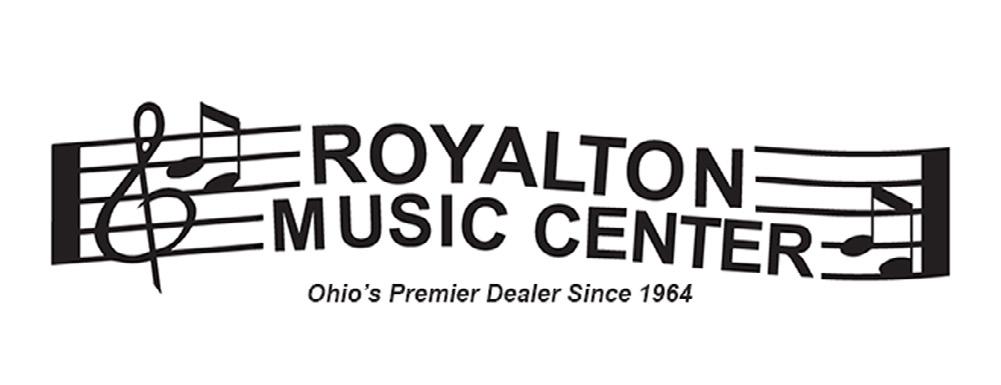
12 TRIAD
In these challenging times, the Ohio Music Education Association truly appreciates the support of the following organizations



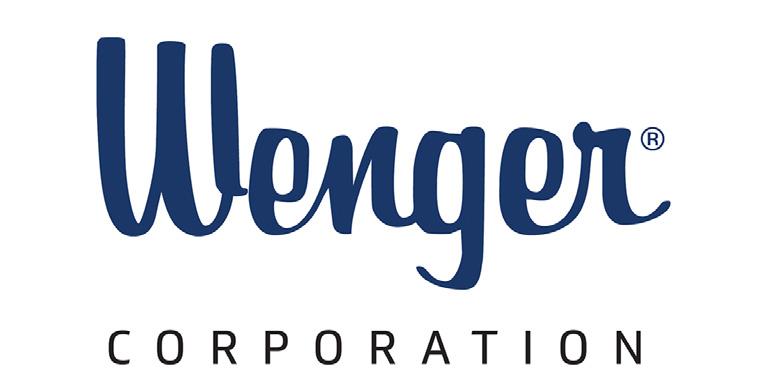

PARTNERS LEVEL III - PRESIDENT’S CLUB organizations who have become Corporate/Institution Partners in our efforts to support Music Education throughout Ohio. Scholarship Audition Dates S BE vibrant (800)992-6682 mountunion.edu/dept-of-performing-arts Scholarships available for majors, minors, and participants in the band, choir, orchestra, and keyboard areas. E XPL ORE M USIC AT MOU NT U NION DECEMBER 2022/JANUARY 2023 13
CORPORATE/INSTITUTION PARTNERS
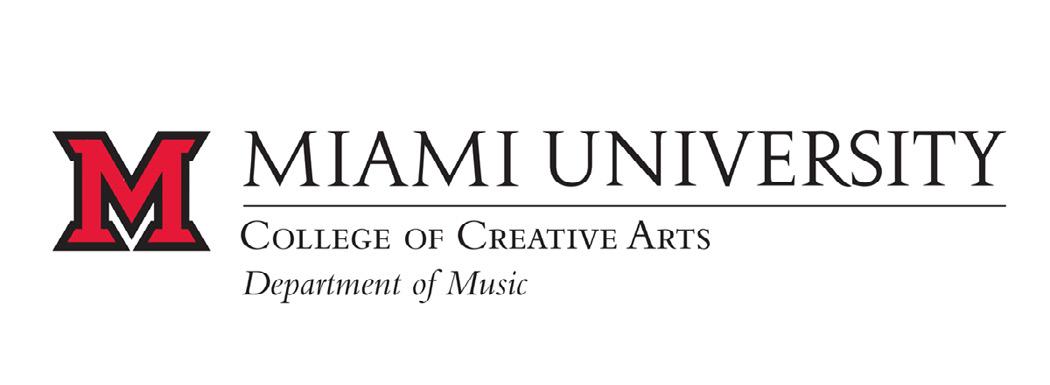
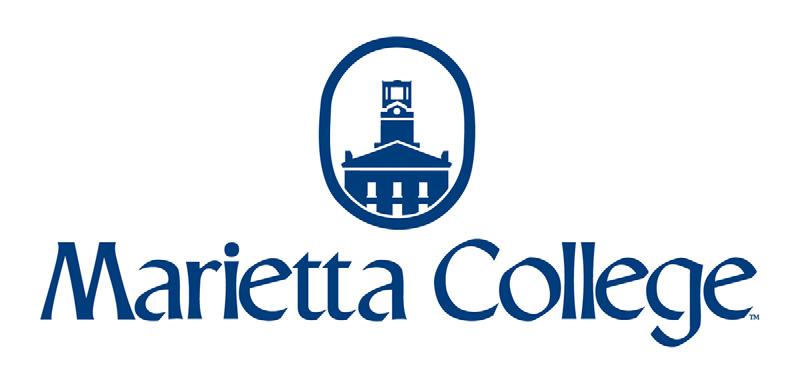

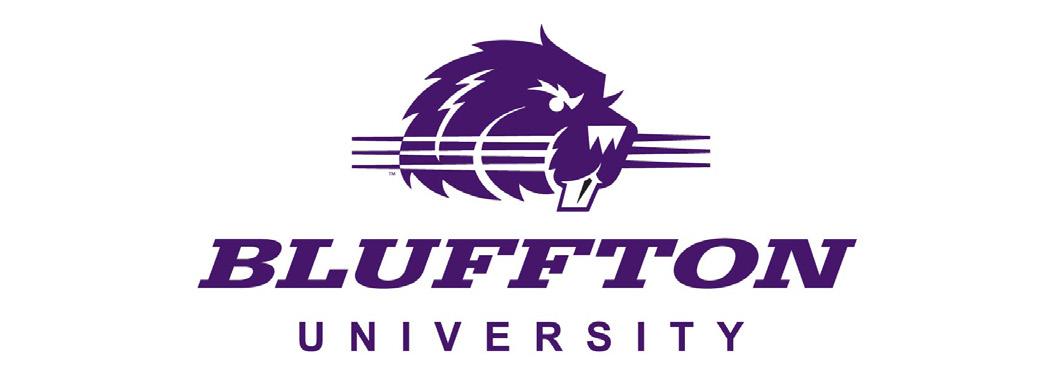
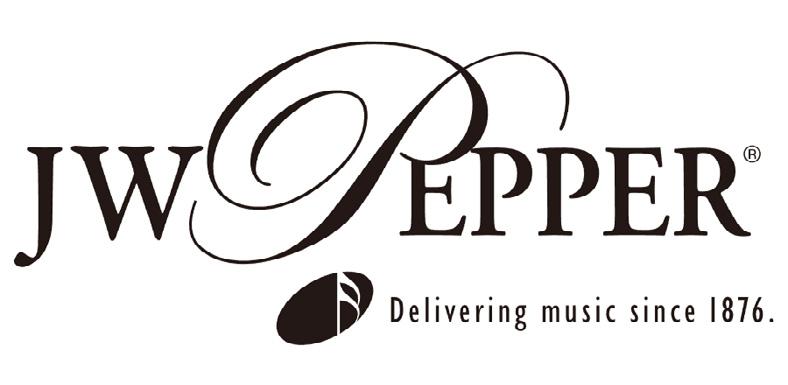

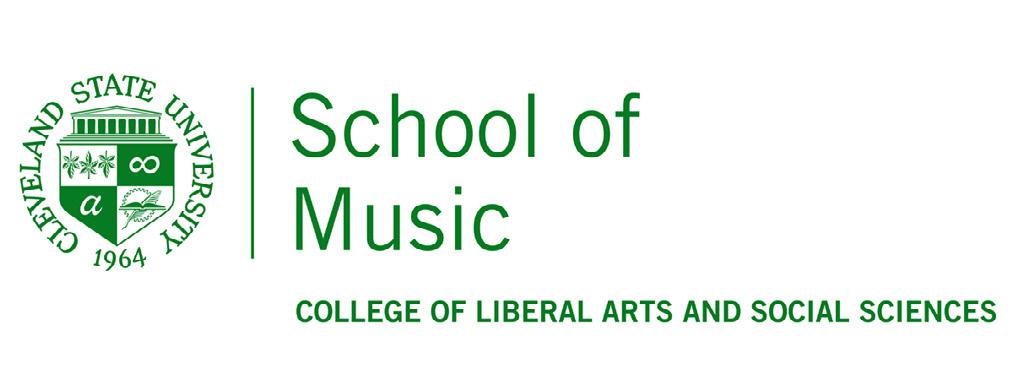

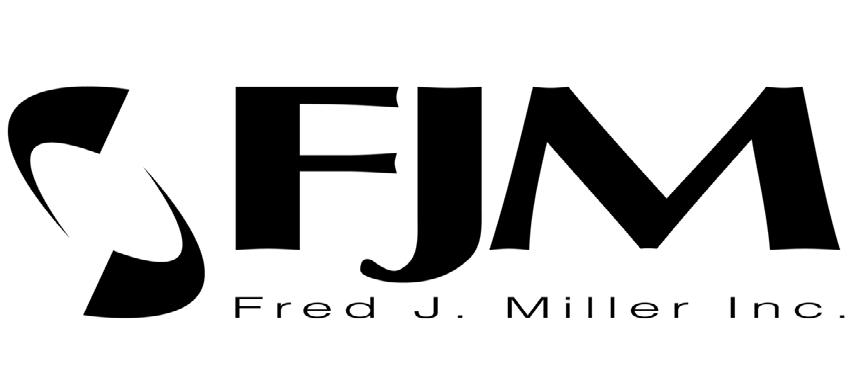

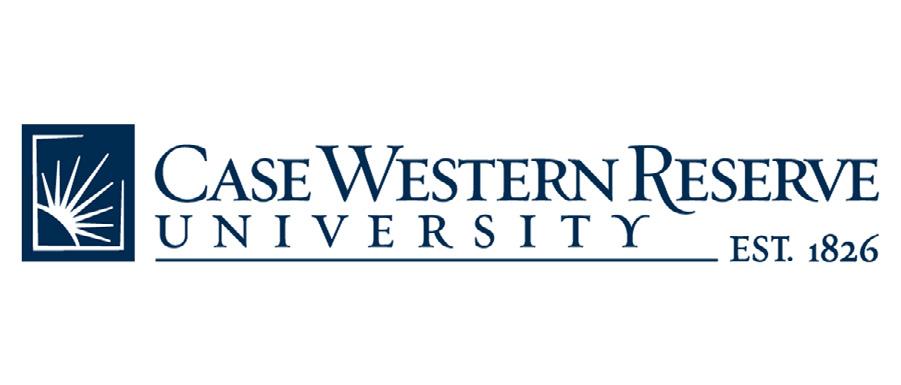
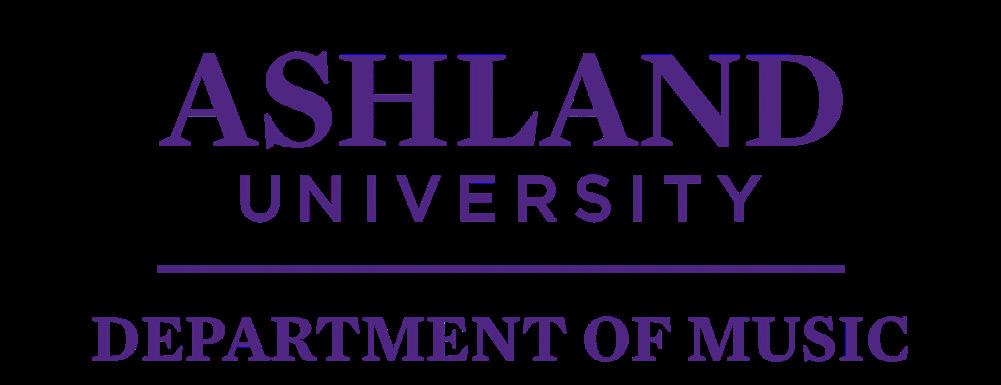
14 TRIAD
In these challenging times, the Ohio Music Education Association truly appreciates the support of the following organizations FERMATA, LLC
PARTNERS LEVEL II - CONDUCTOR’S CLUB


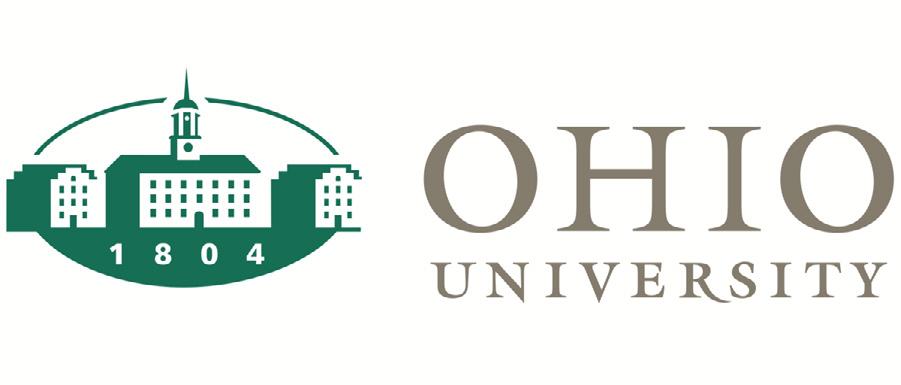
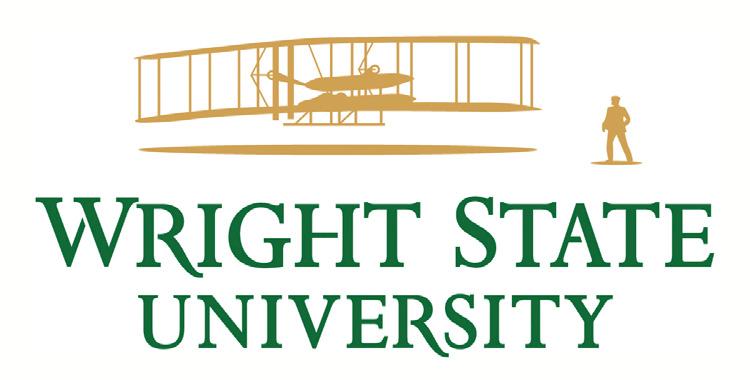
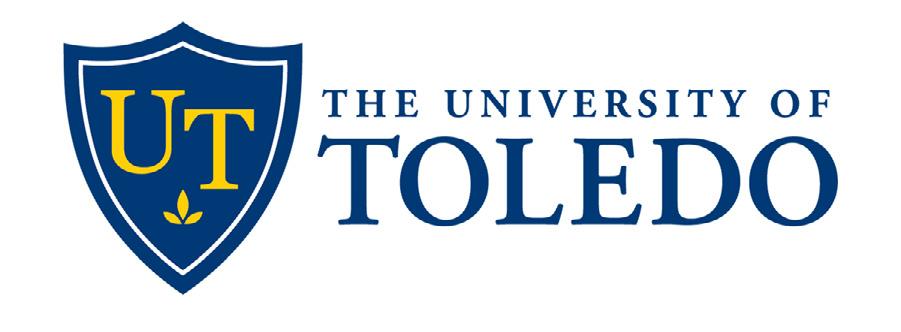


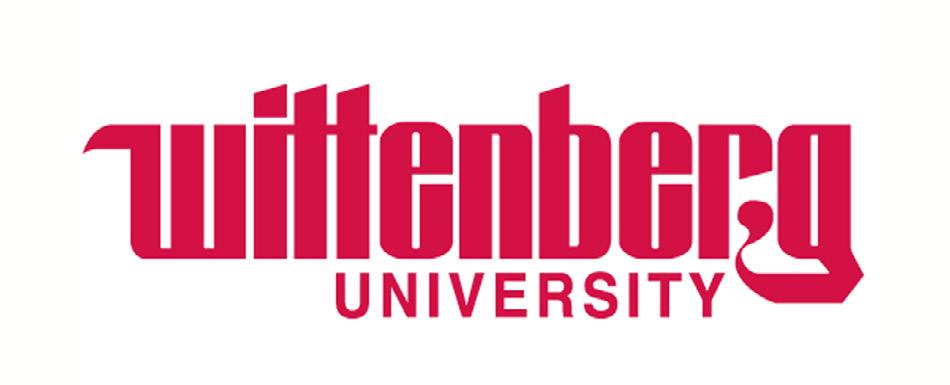
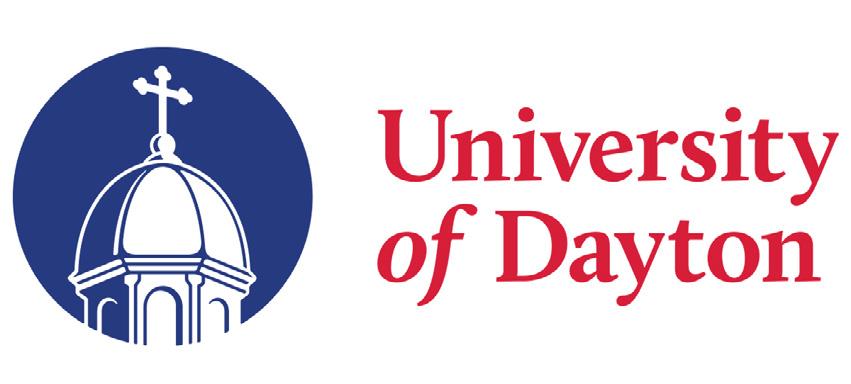
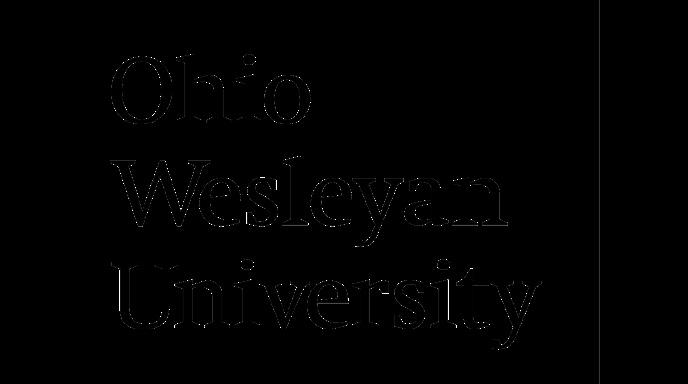
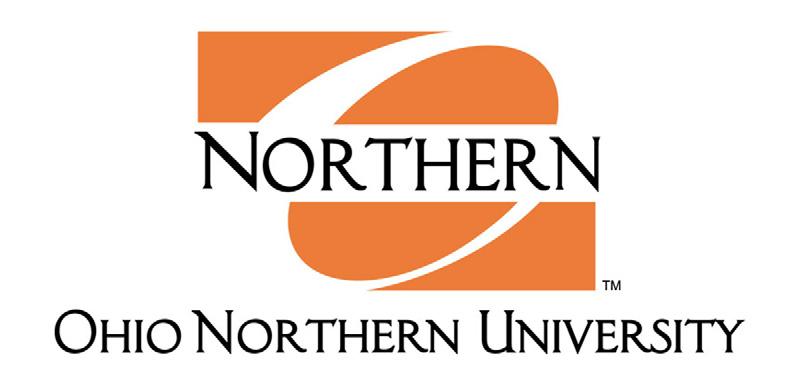
DECEMBER 2022/JANUARY 2023 15
organizations who have become Corporate/Institution Partners in our efforts to support Music Education throughout Ohio.
CORPORATE/INSTITUTION PARTNERS


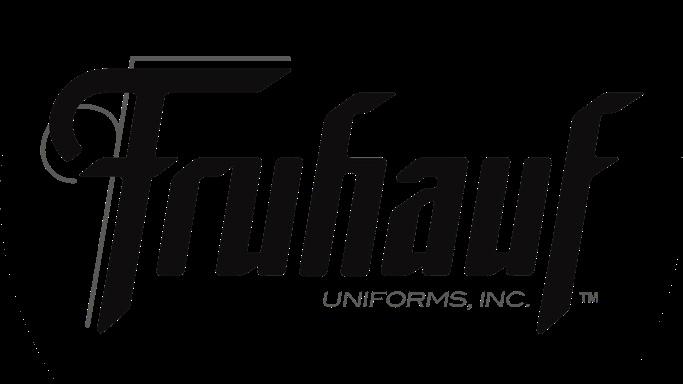

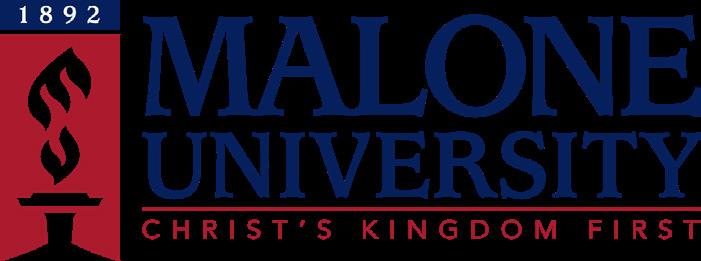

LEVEL I - MUSICIAN’S CLUB

In these challenging times, the Ohio Music Education Association truly appreciates the support of the following organizations who have become Corporate/Institution Partners in our efforts to support Music Education throughout Ohio.
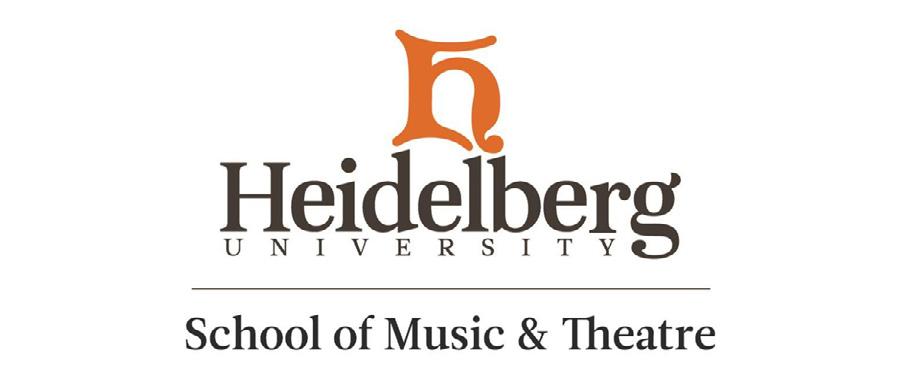
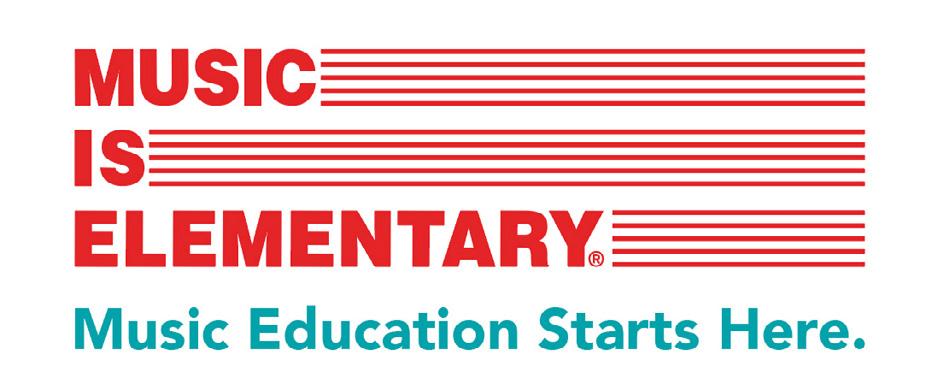
16 TRIAD
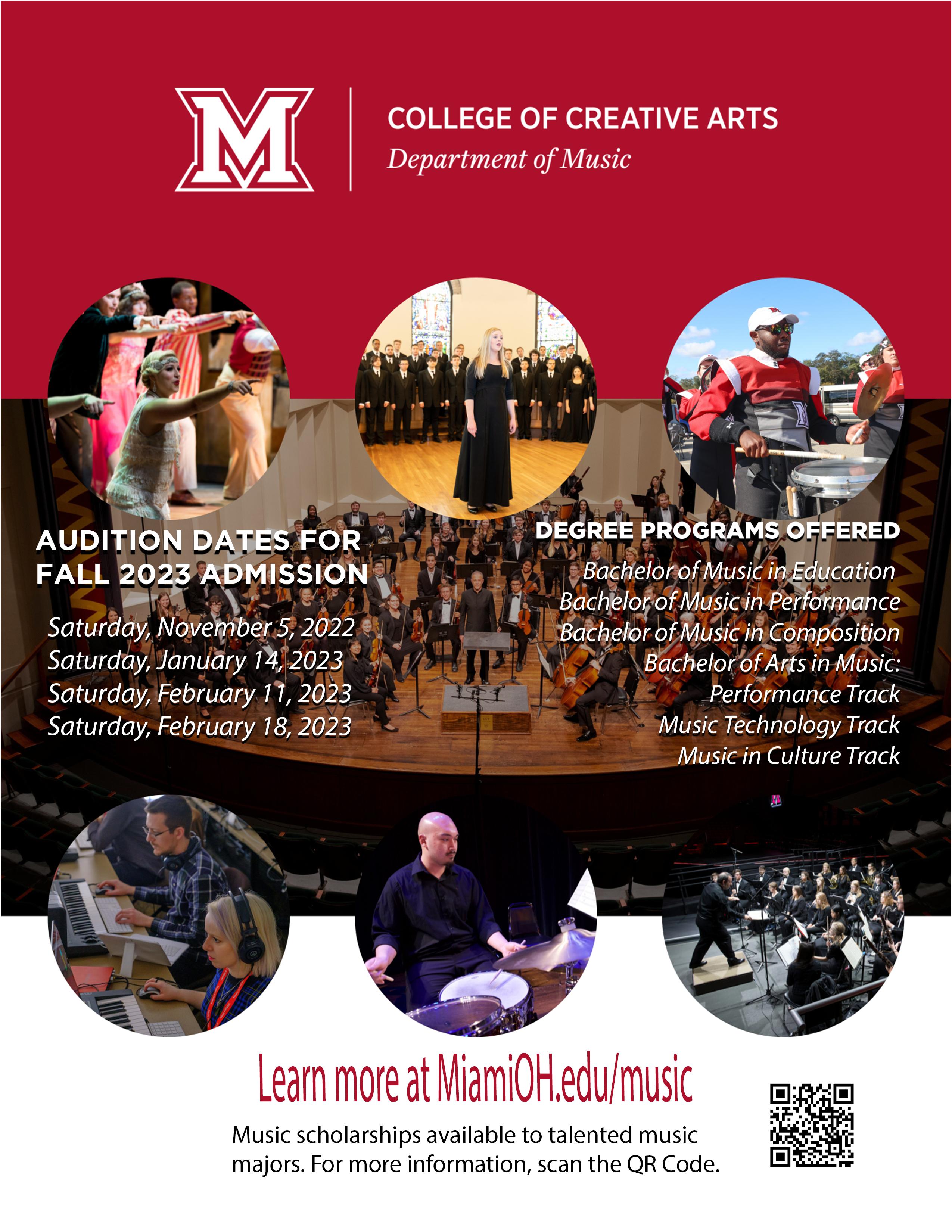


MUSIC EDUCATION IS THE HEART OF WHAT WE DO WWW.KENT.EDU/MUSIC 15 UNDERGRADUATE & GRADUATE DEGREES 450+ MUSIC MAJORS & MINORS 40+ ENSEMBLES & MUSIC ORGANIZATIONS 54-YEAR CLEVELAND ORCHESTRA PARTNERSHIP MUSIC ADMISSIONS EMAIL OR CALL: MUSICADMISSIONS@KENT.EDU 330-672-2172 ANDREW SHAHRIARI GRADUATE COORDINATOR ASHAHRIA@KENT.EDU 330-672-2830 JENNA SEPULVEDA SENIOR ADVISOR MUSIC EDUCATION JBICE@KENT.EDU 330-672-2418 ADMISSIONS & AUDITIONS GRADUATE ASSISTANTSHIPS 100% ONLINE MASTER’S Programs in chamber music, collaborative piano, composition, conducting, ethnomusicology, jazz studies, music education, performance, theory, and technology (Stark Campus).
the Ohio Music Education Association with a donation to the Ohio Foundation for Music Education.
Yes, I want to support music education in Ohio and insure that the benefits acquired by students experiencing music are available for them now and in the future. Please apply my gift as indicated.
Donor Information: (Please print legibly or type this form.)
Name: Street Address: City: State: Zip + 4 Email Address: Best Phone: _____OMEA Member _____OCMEA Member _____Parent _____Friend of Music Education Donation Information: Donation Amount: $ Donation Category: _______ Foundation General Fund for Financial Growth _______ OMEA Memorial Scholarship Fund _______ Charles H. Benner Leadership Academy _______ This is my Annual Campaign Contribution for calendar year 2022. Recognition/Memorials: Please list how you wish to be recognized on our website and in our publications. (Example: John and Jane Smith) , or please do not list my/our names.
(Check area for donation)
This gift is: In Recognition of: In Memory of: _____ Certificate or _____ Card of Donation Acknowledgment. Send to: Address City State Zip
Note: The Ohio Foundation for Music Education is a 501(c)(3) non-profit organization under the Internal Revenue Code. A donation acknowledgment letter will be provided for tax purposes.

Checks made payable to: Ohio Foundation for Music Education
Send this completed form with check to: Ohio Foundation for Music Education Attn: Roger Hall, Executive Director 8227 Audubon St. NW Massillon, Ohio 44646
Support the Mission of
DECEMBER 2022/JANUARY 2023 19
Navigating OTES Part 2: Gathering Data by using HQSD
Dr. Rachael Fleischaker
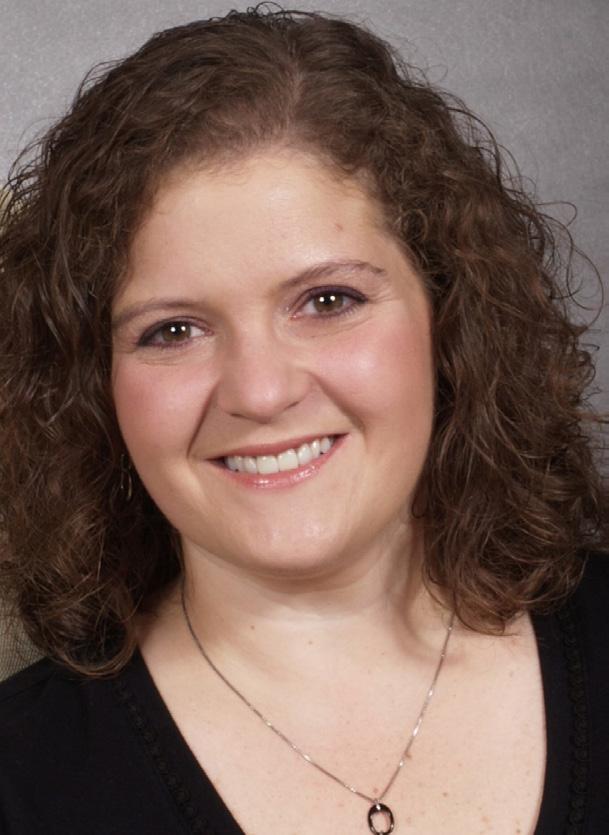
The 2022 OTES Framework requires teachers to use High Quality Student Data (HQSD). Yes, another acronym to add to our already very full bowl of the teacher’s alphabet soup! But, don’t despair. All music teachers assess their students each and every minute they are together. You are constantly assessing behavior, posture, tone quality, diction, vocabulary, fingers, blend, balance, intonation, and so on. Let’s face it, we already know how to assess! The question is, how do we make that knowledge quantifiable and accessible to administrators? This article will explore the guidelines for HQSD and give concrete examples that have been tested by music educators just like you!
Simply put, HQSD is any metric that shows the progress made by individual students. Under the original OTES model, my school district asked that music teachers show student growth by percentage points gained on a paper/pencil test. The assumption was that performance could be quantified on a scale of one to one-hundred and somehow be shown or described on a written test. The OTES 2.0 model does not work in those limiting terms. While student growth is still the end result, it can be measured in multiple ways that include, but are not limited to rubric based assessment. Music educators can describe how the sound qualities, skill levels, and performance techniques of individual students are truly assessed using descriptive terms.
CRITERIA FOR HQSD
Music teachers use a variety of assessments throughout a school year, but a minimum of two assessments must meet all seven of the characteristics listed here for the metric to be considered HQSD. Music teachers do not need to have HQSD for each course taught. They can focus on a particular content area, a specific strand or skill set, a particular subgroup of students, or a combination of the three. The OTES 2.0 model includes very specific guidelines for determining HQSD.. Note that while many forms of assessment are encouraged throughout the course of instruction, for an assessment to be considered HQSD all seven elements must be met The following descriptions are revised and reprinted with permission from an article in the Fall 2021 TRIAD (Fleischaker, 2021).
1. Align to learning standards - This particular condition means that assessments should collect information about students’ growth towards the learning standards used by the music department. Many districts use the Ohio Department of Education Content Standards for Music (2021 Draft Standards), but others may have an adopted curriculum that is specific to K-12 music. If you are unsure what your learning standards are, check with your principal, curriculum specialist, or other music teachers in your district.
20 TRIAD

BW
PRISM,
BW
BW
bw.edu
create
Joe Brown ’25 Music Education major, tuba primary Winner, BW Jingle Contest
Resident Assistant
band director
Beatles, guitar
Marching Yellow Jackets Symphonic Wind Ensemble
music.
School of Music
are cordially invited... to attend our Alumni and Friends Reception during the OMEA 2023 Professional Development Conference in Columbus, Friday, February 3, at 6:15 p.m. Visit The University of Akron School of Music at Booth #433 and attend these special events: Assessment Is Not a Four-Letter Word: From edTPA to OTES 2.0, Building Assessments in Music Friday, Feb. 3, 9:30 a.m. HY Madison Dr. Christine Russell and Dr. Ann Usher, clinicians.
Meet Zippy!
During the Alumni and Friends reception and at the UA School of Music booth, Friday, Feb. 3.
HIGH SCHOOL CLINIC WEEK, FEB. 13 - 16 • Band Clinic Monday, Feb. 13, E.J. Thomas Hall, 198 Hill St. For more information, visit www.uakron.edu/bands.
• Vocal-Choral Festival Wednesday, Feb. 15, E.J. Thomas Hall Contact Dr. Marie Bucoy-Calavan at mbucoycalavan@uakron.edu for details. • Orchestra Clinic Thursday, Feb. 16, E.J. Thomas Hall Contact Dr. Guy Bordo at gvbordo@uakron.edu for more information.

JazzFest 2023 Tuesday-Friday, April 4-7 Featuring Grammy© award-winning trumpeter Sean Jones and UA alumnus, composer, and trombonist Sam Blakeslee Visit www.uakron.edu/music/jazz for details.
Scholarship Audition Days
Monday, Feb. 20, 2023
Saturday, Feb. 25, 2023
Friday, March 3, 2023 Virtual auditions by appointment. Sign up online at www.uakron.edu/music. For more information: 330-972-8301 music@uakron.edu www.uakron.edu/music
• Outstanding programs and ensembles • Numerous performance opportunities • Master classes and residencies by acclaimed guest artists • Affordable tuition and generous scholarships • Internationally renowned faculty-musicians DEGREE PROGRAMS Bachelor of Music (B.M.) • Music Education • Theory/Composition • Performance • Jazz Studies • Accompanying Bachelor of Arts in Music (B.A. in Music) Bachelor of Arts in Music with Business Cognate Master of Music (M.M.) The University of Akron School of Music Dr.
Director 330-972-7590 • music@uakron.edu www.uakron.edu/music The University of Akron is an Equal Education and Employment Institution www.uakron.edu/eeo ©2023 The University of Akron You
Marc Reed,
•
•
•
Photo Dale Dong
2. Measure what is intended to be measuredThe assessment must be intentional in the expected outcome. It must also be accessible to students. A written assessment intending to measure a student’s knowledge of musical content could actually be measuring their reading ability. For example, if a written assessment is intended to measure a student’s knowledge of notational literacy, the music teacher must be sure that the reading level is appropriate. Any student on an IEP or 504 must be granted the necessary accommodations.
3. Be attributable to a specific teacher for course and grade level taught - Any assessment should be directly related to the content taught within the course. Musical growth is often a spiraling process and students must build upon skills taught in each grade level. HQSD must accurately reflect what is being taught. It must be directly linked to the current teacher and the appropriate grade level of the student. In other words, a teacher cannot use data from an online music program if that program is only ever used as a homework assignment. The assessments must happen during class time and the students must have access to teacher interaction for it to be attributable to the teacher. After all, do you really know if the student did the homework or was it possible that a family member or friend completed the assignments?
4. Demonstrate evidence of student learning (achievement and/or growth) - The pretest/ post-test scenario is perhaps the most common type of assessment which measures growth. If that model works in your teaching situation, then it can still be used. However, OTES 2.0 does not limit music educators to traditional paper/pencil tests. A rubric would be an appropriate metric to compare beginning skills with ending skills. A performance-based assessment that measures musical qualities such as rhythmic accuracy, tone quality, articulation, diction, etc. can be used to measure growth. The repertoire used would not need to be the same at the beginning and end of the course as long as the musical elements are identified and examined.
5. Follow protocols for administration and scoring - HQSD must be implemented with integrity. To that end, the district committee that oversees the process will need to know how the test will be administered (who gives the assessment and how it is given), as well as how it will be scored (how the growth is measured). For example, will one teacher give all of the assessments or will there be multiple evaluators for each assessment.
6. Provide trustworthy results - This simply means that the metric needs to yield reliable and consistent results. Factors such as allowing ample time, including enough items to accurately measure the content and skill indicated, avoiding ambiguous questions, providing clear directions, and consistently using rubrics or scoring increase trustworthiness. Once while evaluating an assessment for another teacher, I noticed that the directions were “label the following notes with letter names.” Unfortunately, the teacher had not included a clef sign in the musical example. To me that would be an ambiguous question, but a committee member who does not have musical training may not have seen the error. Having other music teachers review your assessment would avoid those types of mistakes.
7. Not offend or be driven by bias - Test questions and tasks that students are asked to perform should be free from bias. An example of bias might be asking students to read questions in English if it is not their primary language. Another example of bias would be expecting students to record themselves at home when some students do not have access to a device or to the internet for uploading.
The important point to remember when determining if an assessment meets the HQSD criteria is that you as the teacher must be able to explain how the metric meets the guidelines and your building administrator or local HQSD representative must approve it. What works in one district might be rejected in another. You must have the conversations with your administrators.
DECEMBER 2022/JANUARY 2023 23
DEVELOPING HQSD
In the state of Ohio, there is not value-added data or state-adopted vendor assessments for music education. Determining if a particular assessment meets all seven qualities is decided at the local level. For many school districts, this means that the music teacher must develop their own HQSD. Under OTES 1.0, each school district had to have a committee or designated person approve the assessments before they could be used for an evaluation. A similar system must be used by each district to determine if an assessment can be used to collect HQSD. The committees are district driven so the OMEA Teacher Evaluation committee encourages music teachers to be involved whether volunteering at the district level or working with other music educators in their schools to develop HQSD.
Designing HQSD begins with articulating what a student should know and be able to do at the end of the course. These goals are derived from your board adopted curriculum or the Ohio Content Standards for Music Teaching which were recently revised and soon to be adopted. They can be found on the ODE webpage (2021 Music Draft Standards). Once goals are identified, music teachers must use assessments to determine whether individual students are on-track to reach the goal. The OMEA Teacher Evaluation committee highly recommends that each music educator develop a means to communicate their goals for the program with rubrics and other metrics so that evaluators can be objective in determining success.
THE SLO CONFUSION
Many teachers have asked if they can use their old SLO as their new HQSD. The answer is maybe! If the assessment metric that you have used to determine student growth in the SLO process meets the seven criteria of HQSD and it is approved by your district, then yes, you can use it. If, however, the assessment falls short of some of the criteria, you may need to revamp it for it to be approved. The next section gives some solid examples of assessments that have been used by music educators and approved by their school district.
EXAMPLES OF HQSD
Example 1. Fourth
Grade General Music
In this example, fourth grade recorder classes met once a week for forty minutes. For this course, the curriculum used was Recorder Karate (Philipak, 2002). This curriculum included a recorder quiz which was administered in the first week of instruction and used as a pre-test base data. This is a leveled curriculum that begins with a few basic skills. It has a series of nine songs for the students to perform. Each song adds new skills and gets progressively more challenging.
The curriculum was not used exclusively. It was supplemented with other method books that included short exercises for reviewing and reinforcing skills. By the end of the semester, the goal was to have students proficient in reading the music and performing songs through the fifth level of the Recorder Karate curriculum. Because some students were able to go further, this curriculum offered the flexibility for differentiating their learning by having some students move ahead in the book at their own pace. At the end of the semester, the same recorder quiz that was previously administered was given again with the addition of a short sight reading excerpt. Comparing pre and post test scores was a means to quantify student growth.
24 TRIAD
Below is an explanation of how this example meets the HQSD guidelines.
Criteria for HQSD Evidence
Align to learning standards
Aligns to the Ohio Department of Education Content Standards for Music: 4.1PE Read, write and perform using known rhythms and whole notes and sixteenth-note combinations or syncopated rhythm in simple duple, triple and quadruple meters.
4.2PE Read, write and perform extended pentatonic melodies in treble clef in “do” or “la” pentatonic using a system (“do” and “la” tonal centers).
4.4PE Play a variety of classroom instruments, alone and with others, and demonstrate proper techniques.
4.3RE Compare and contrast elements of music using developmentally appropriate vocabulary
Measure what is intended to be measured
Be attributable to the specific teacher for course(s) and grade level(s) taught
Demonstrate evidence of student learning (achievement and/or academic growth)
Follow protocols for administration and scoring
This assessment instrument has 2 points of data that measure the students’ ability to demonstrate their knowledge of musical literacy and their growth in performance technique on the recorder.
Grade Level: 4th Grade Course: General Music Instructor: Dr./Ms./Mr. (add your name)
Students must demonstrate proficiency or mastery of a skill before progressing to the next skill. The performance based assessment is used multiple times throughout the course to track progress in the area of technical proficiency and the pre/post test measures their growth in musical literacy.
Progress is tracked through two data entry points. The first point is a pre-test administered at the beginning of the year. This will be followed by a post test administered in April. Growth will be determined by comparing the scores. A year’s worth of progress will be met if the student grows by 50% of the gap in knowledge. The second data point is performance-based. Students will be challenged to progress through nine levels of a curriculum. Each level builds on the skills from the previous one. My goal is to have at least 80% of my students progress to Level 5.
Provide trustworthy results
Not offend or be driven by bias
The Canton City Schools Music department has used both data points to monitor and assess progress in the 4th grade for the past 6 years. The results are consistent across the district.
Students do not need to have any prior knowledge of playing recorders. All information presented builds on itself.
Example 2. Seventh Grade Band
Rubric for Seventh Grade Band Playing Test
DECEMBER 2022/JANUARY 2023 25
Example 2. Seventh Grade Band
In this example, seventh grade band students are assessed using the rubric below. The class meets daily for forty minutes as a whole band. The curriculum used is repertoire based. Various method books such as Sound Innovations (Sheldon, Boonshaft, Black, & Phillips, 2010) and Warm-Ups and Beyond (Loest, 2003) are used in the class. The group performs four concerts during a typical school calendar (fall, winter, early spring, and end of year). They average 60 band members.
Their HQSD is concentrated on performing major scales, excerpts from the band repertoire,
and sight-reading. Below is an example of rubric used. The students are assessed using this rubric a minimum of four times each year. Their growth can be measured from the beginning to the end of the year numerically with this rubric. In this example, two directors are present during class and so the students are pulled from class and play individually for a director. However, if only one director works with the group, the students could go to a practice room or into the hallway to record themselves playing with an iPad or similar device.

26 TRIAD
Seventh grade Band Playing Test
Name _____________________________________Instrument Date ______________________________________Final score _________________
1. Director chooses 1 scale for students to play. By the end of the year, students should be able to play the following scales - Concert F, Bb, Eb and Ab.
Novice (1 pt.) Apprentice (2 pts.) Proficient (3 pts.)
Scale #1 1 octave scale with music 2 octave scale with music, or 1 octave scale memorized 2 octave scale memorized
Scale #2 1 octave scale with music 2 octave scale with music, or 1 octave scale memorized 2 octave scale memorized
Scale #3 1 octave scale with music 2 octave scale with music, or 1 octave scale memorized 2 octave scale memorized
Scale #4 1 octave scale with music 2 octave scale with music, or 1 octave scale memorized 2 octave scale memorized
2. Director chooses an example from a method book that the student has not played in class.
Novice (1 pt.) Apprentice (2 pts.) Proficient (3 pts.)
Tone Able to produce a sound, but tone is uncontrolled and airy Able to produce a sound, but more control needs to be developed to sustain sound
Rhythm/Steady Beat
Does not maintain a steady beat, does not perform the correct rhythms
Note Accuracy Plays notes with little accuracy
Articulation/ Sticking
Does not slur or tongue, or does not use proper sticking
Sometimes lacks either a steady beat, and/or correct rhythms
Able to produce a clear, sustained sound with control
Maintains a steady beat and performs correct rhythms
Plays notes mostly accurately Plays notes with nearperfect accuracy
Sometimes slurs and tongues, or sometimes uses proper sticking
Always slurs and tongues, or always uses proper sticking
3. Director chooses an excerpt from the band music. Students have been told in advance and can practice this excerpt at home.
Novice (1 pt.)
Tone Able to produce a sound, but tone is uncontrolled and airy
Rhythm/Steady Beat
Does not maintain a steady beat, does not perform the correct rhythms
Note Accuracy Plays notes with little accuracy
Articulation/ Sticking
Does not slur or tongue, or does not use proper sticking
Apprentice (2 pts.) Proficient (3 pts.)
Able to produce a sound, but more control needs to be developed to sustain sound
Sometimes lacks either a steady beat, and/or correct rhythms
Able to produce a clear, sustained sound with control
Maintains a steady beat and performs correct rhythms
Plays notes mostly accurately Plays notes with nearperfect accuracy
Sometimes slurs and tongues, or sometimes uses proper sticking
Always slurs and tongues, or always uses proper sticking
DECEMBER 2022/JANUARY 2023 27
Below is an explanation of how Example 2 meets the HQSD guidelines:
Below is an explanation of how Example 2 meets the HQSD guidelines:
Criteria for HQSD
Align to learning standards
Evidence
Aligns to the Ohio Department of Education Content Standards for Music:

ENI.1PE Read and perform with correct pitches, correct rhythms and printed dynamics.
ENI.2PE Play or sing with a characteristic tone quality and perform individual pitches with accurate intonation.
ENI.3PE Demonstrate proficiency in four major and two minor key signatures.
ENI.4PE Perform prepared or improvised music with technical accuracy (speed, manual dexterity, articulation).
ENI.5PE Perform compositions intended for sight reading with correct pitches, correct rhythms, characteristic tone, accurate intonation and printed dynamics.
Measure what is intended to be measured This assessment instrument has 4 points of data that measure the students’ ability to demonstrate their knowledge of musical literacy and their growth in performance technique on their band instrument throughout the school year.
Be attributable to the specific teacher for course(s) and grade level(s) taught
Demonstrate evidence of student learning (achievement and/or academic growth)
Follow protocols for administration and scoring
Grade Level: 7th Grade Course: Band Instructor: Dr./Ms./Mr. (add your name)
The rubric is used multiple times throughout the course to track progress in the areas of tone, rhythmic accuracy, note accuracy, and articulation. Students should be able to grow by at least 6 points throughout the year.
Progress is tracked using the performance rubric. Students are pulled from class individually to play for a director. The director uses the rubric to rate their performance. Either director can evaluate any of the students.
Provide trustworthy results
The music department has used this rubric to monitor and assess progress for many years. Multiple directors are used in administering the tests. The results have been consistent and shown both reliability and validity over the last few years.
Not offend or be driven by bias Each student must be able to play the same scales and read the same passages for sight reading and band music. All students have the same amount of time in class to prepare and practice the skills.
28 TRIAD

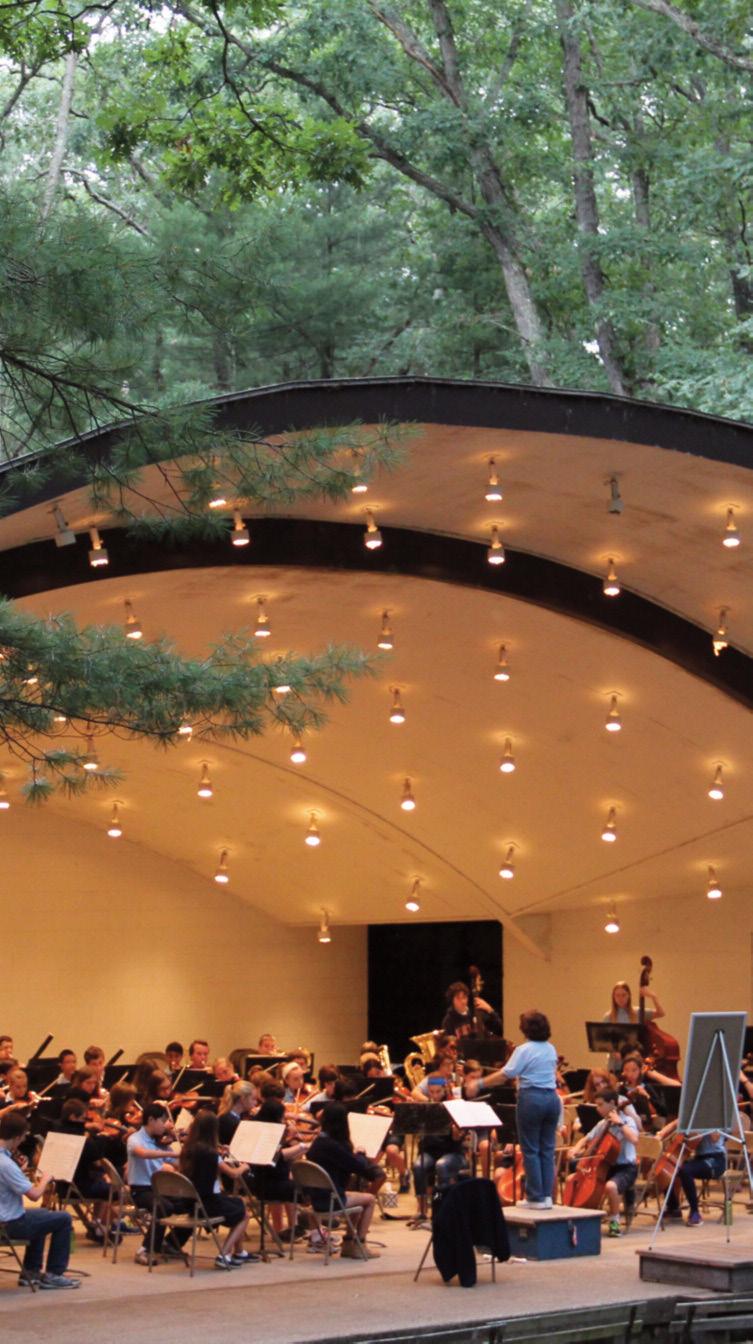
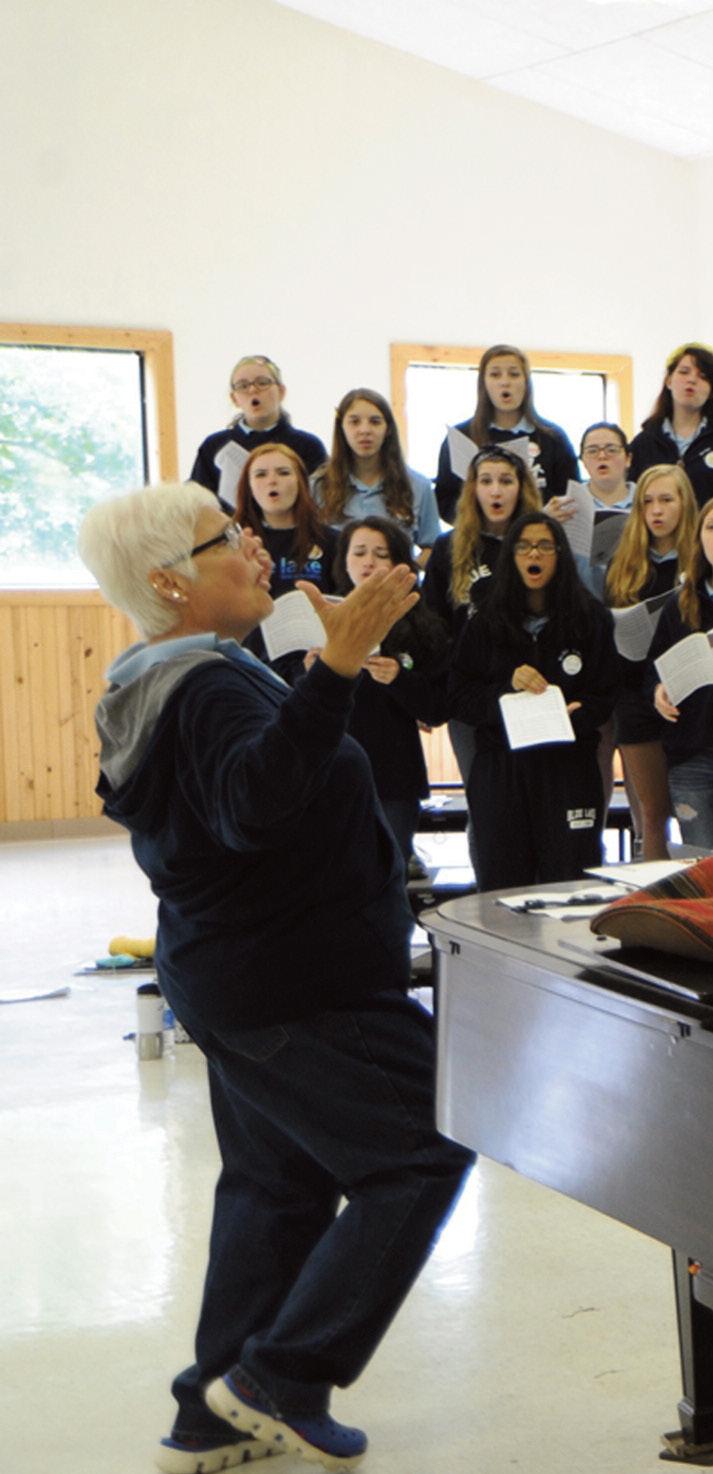



2023 PIANO DANCE VISUALARTS CREATIVEWRITING ORCHESTRA JAZZ BAND THEATER HARP CHOIR fineartscamp TM ITSTARTS HERE 300E.CRYSTALLAKERD.TWINLAKE,MICHIGAN49457SINCE1966 800.221.3796231.894.1966 TWOWEEKSESSIONSFORGRADES5-12 JUNE-AUGUST2023 Nowacceptingapplications Scholarships&financialassistanceavailable BLUELAKE.ORG
Example 3. High School Choir
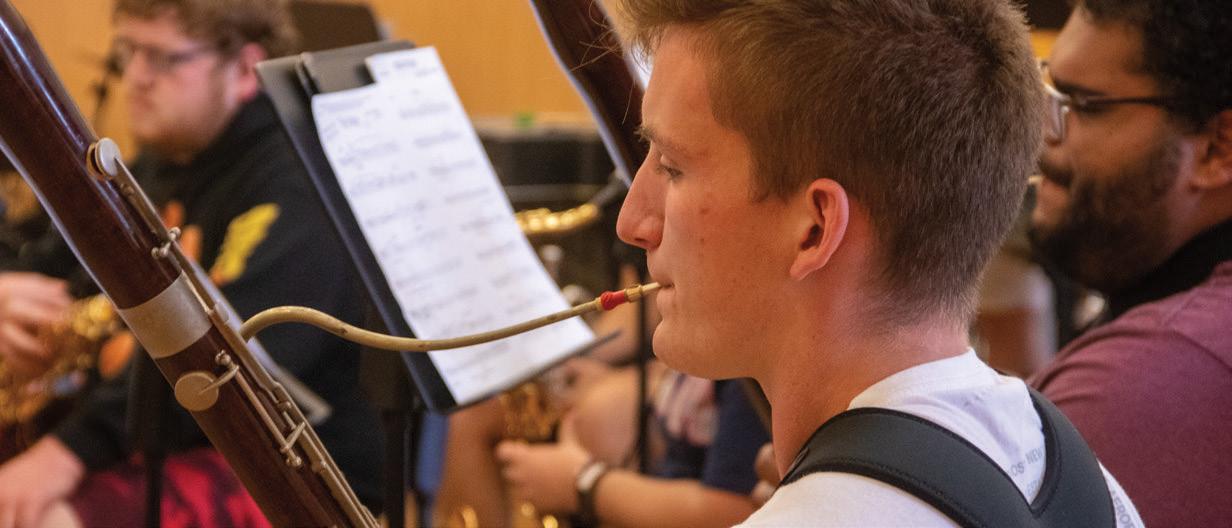
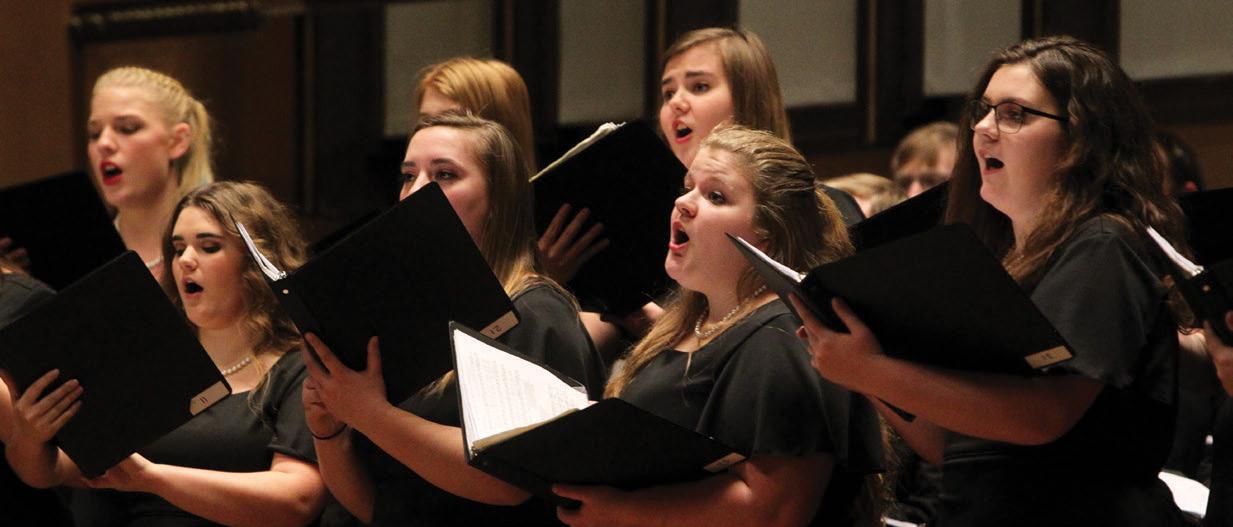
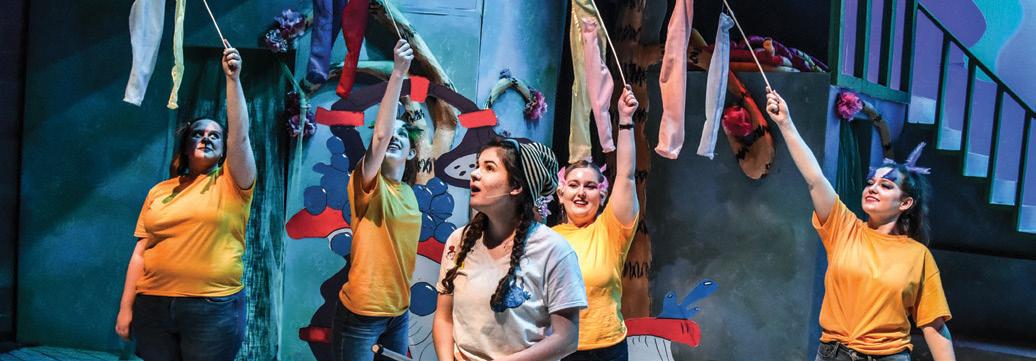


Much like the previous example, this example of HQSD is performance driven and assessed through the use of a rubric. Students from this choir meet on an A/B block schedule meaning they only meet every other day for a 90 minute period. The choir director from this school selects excerpts from repertoire for upcoming concerts. The choir performs approximately twelve times in a typical school year so this rubric allows them to focus on individual skills while still advancing the ensemble’s ability to perform the repertoire.
This particular rubric was adapted from one published by the Ohio Arts Assessment Collaborative (Battelle for Kids, 2015). Because the class meets for 90 minutes, the director is able to use a combination of whole group instruction and sectional work. Students are given assignments on their iPads while a section works with the director. During the small group work, the director can assess individuals using the rubric. Students can score 0 - 80 points. The numeric score helps to show growth over time and can be used as grades for the course.
MUSIC AT MUSKINGUM AUDITION DAYS Saturday, January 14, 2023 Monday, February 20, 2023 74 0-8 26 - 80 9 5 | MUS I C@ MUSKIN G UM.EDU | MUSK I NGUM.ED U/MU S I C 30 TRIAD
Rubric for High School Choir Singing Test
0 points 2 points 4 points 6 points 8 points 10 points
Pitch Accuracy Did not participate Attempted, but did not meet criteria of novice level
Rhythmic Accuracy Did not participate Attempted, but did not meet criteria of novice level
Breath Support/ControlTone Quality
Did not participate Attempted, but did not meet criteria of novice level
Intonation Did not participate Attempted, but did not meet criteria of novice level
Vowels Did not participate Attempted, but did not meet criteria of novice level
More note errors than correct notes. Notes sung with errors that include intervals or simple leaps
More rhythm errors than correct ones. Errors include simple rhythmic patterns and note values
Support missing in several places. Forward placement lacking. Pushed or breathy tone
Sung with sharping/flatting of pitch most of the time in several sections
Vowels are misshaped on several of the five (ah, oh oo, eh, ee) pure vowels in several words.
Diction Did not participate Attempted, but did not meet criteria of novice level
Style Did not participate Attempted, but did not meet criteria of novice level
Words are difficult to understand in several sections but are still recognizable
Style is inconsistent. Markings and articulations (such as legato, staccato, marcato) are not present in several sections
Correct notes sung most of the time. Missing notes limited to difficult intervals or leaps.
Rhythms sung with small errors limited to duration, rhythmic patterns, and cut offs.
Forward placement inconsistent. Sung with support, but breathy across range.
Few note errors. Missing notes do not hinder the sense of key.
Few errors in rhythms. Missing rhythms do not hinder sense of beat
Sung with healthy support and forward placement for clear, not breathy.
No note errors.
Rhythms are precise including cut offs and phrase endings.
Rich developed tone. Well placed and advanced beyond age.
Sung in tune most of the time. Slight sharping/flatting heard occasionally or in small sections.
Vowel shapes are mostly correct with errors limited to certain vowels or in certain words
Sung in tune with few problems. Strong sense of tonal center.
Correct shaped vowels are used. Vowels are open with focus on five pure vowels
Sung in tune all of the time with precise tonal center.
Vowels are properly shaped and consistent across registers. Pure vowels and diphthongs are clear and open.
Words are mostly understood with few errors.
Most style markings are correctly used. Only a few articulations are missed.
Words are clearly understood but lacking precision with consonants
Style markings are correctly sung, as indicated in the score.
Articulations are used.
Words are clearly understood with precise and clear consonants.
Style markings are correctly sung as indicated in the score and individually synthesized to create an artistic performance.
Dynamics Did not participate Attempted, but did not meet criteria of novice level
Some dynamics are attempted, but may be incorrect or not completely demonstrated.
There are few errors in dynamics found in score.
Below is an explanation of how Example 2 meets the HQSD guidelines.
Dynamics found in the score are sung correctly.
Dynamics in the score are sung correctly and use of dynamics to shape phrases is demonstrated.
DECEMBER 2022/JANUARY 2023 31

Below is an explanation of how Example 2 meets the HQSD guidelines:
Criteria for HQSD Evidence
Align to learning standards
Aligns to the Ohio Department of Education Content Standards for Music: ENAD.1PE Read and perform with correct pitches, correct rhythms, printed dynamics, printed articulations, appropriate style and musical expression for the music being performed.
ENAD.2PE Play or sing with a characteristic tone quality, perform a full range of pitches with accurate intonation, understand intonation tendencies, adjust during performance and utilize concepts of just intonation.
ENAD.4PE Perform prepared or improvised music showing mastery of technical accuracy and expression in several types of ensembles.
Measure what is intended to be measured
This assessment is intended to measure the student’s ability to interpret and perform choral repertoire that will be performed for audiences throughout the year. The rubric is used multiple times throughout the course to track progress in the areas of rhythmic accuracy, pitch accuracy, tone quality, intonation, diction, vowel formation, stylistic interpretation, and dynamics.
Be attributable to the specific teacher for course(s) and grade level(s) taught
Demonstrate evidence of student learning (achievement and/or academic growth)
Follow protocols for administration and scoring
Grade Level: High School Grades 9-12
Course: Choir
Instructor: Dr./Ms./Mr. (add your name)
This assessment instrument has multiple points of data. Students should be able to grow by at least 8 points throughout the year.
Progress is tracked through the use of the performance rubric. Individuals sing in small groups and are scored by the director. Students rehearse during class and the evaluation occurs at a planned time during class so that students are able to prepare in the days leading up to the assessment.
Provide trustworthy results
Not offend or be driven by bias
This rubric has been developed over the course of many semesters. The results, when compared year to year, have been consistent between choral groups.
Each student must be able to sing the same passages. All students have the same amount of time in class to prepare and practice the listed skills.
DECEMBER 2022/JANUARY 2023 33
Example 4. Music Theory
The final example is for anyone who uses on-line music theory-based software programs. There are many different music programs available for young musicians: NinGenius, Sight Reading Factory, uTheory, Quaver, and many more. All offer leveled lessons with spiral curricula. Many of these programs have built-in assessments and the ability to track students’ progress. They are not unlike some online reading and math programs that your school district may use. These types of programs are known as vendor assessments. Simply put, they are pre-packaged curriculum that a district can purchase, and many districts use them to evaluate student growth in a particular subject and, as a result, will attribute that growth to the content teacher.
The state of Ohio does not have an officially adopted vendor assessment system for music education, however, that does not mean that some of these programs cannot be used. In order for an online program to be considered HQSD, it must be used during your class time to supplement your teaching. As stated before, if you claim that the students’ growth can be attributed to your instruction, you must be the one teaching the concepts. The program would then be used as practice to sharpen skills and as assessment.
This example is not accompanied by an explanation chart, but there are many factors to be considered if you would like to use them as HQSD. The program must address standards that are appropriate for the course. In terms of bias, students must be given equal access to all components of the program. Considerations should be given to access to devices. For instance, does the school provide computers or tablets that students can take home? Do the students need to have access to the internet and do they?
For state adopted vendor assessment, the results of the assessments have been examined and proven to be trustworthy, reliable, and valid. Many of the online music programs have also been vetted, but before buying one, the prudent music educator would review the material and research how the company created and tested the program. For many of the programs, the students’ growth is easily tracked and measured which makes them very attractive to administrators who like to see data.
CONCLUSIONS
The key point of this article is that for any HQSD, it is up to the individual music educator to examine the assessments being used and be able to explain how they meet the ODE criteria. The final article of this series will detail how to use the HQSD and other facets of your teaching as evidence towards your professional growth for your evaluators.For those who still have questions, want to learn more, or are in a difficult situation, your OTES committee has many sessions lined up for the PDC Conference this February in Columbus. Please join us to share your experiences using HQSD.
REFERENCES
Battelle for Kids. (2015). High school vocal music. Ohio Arts Assessment Collaborative. Retrieved from https://static.battelleforkids. org/documents/oaac/assessments/music/hs-vocal-music/HSVocalMusicAdminScoringGuide.pdf
Fleischaker, R. (2021). OTES 2.0 is here! What now? TRIAD, 89(1), p. 33-38.
Loest, T. (2003). Warm-ups and beyond: A comprehensive rehearsal book for developing bands. The FJH Music Company, Inc.
Ohio Department of Education. (2020). Ohio teacher evaluation system 2.0 model. Retrieved on November 30, 2022 from https://education.ohio.gov/getattachment/Topics/Teaching/Educator-Evaluation-System/Ohio-s-Teacher-Evaluation-System/OTES-2-0/ Model-OTES-2-0-Final-03-27-20.pdf.aspx?lang=en-US
Philipak, B. (2002). Recorder karate. Plank Road Publishing, Inc.
Sheldon, R. Boonshaft, P. Black, D., & Phillips, B. (2010). Sound innovations for concert band: A revolutionary method for beginning musicians. Alfred Music Publishing Co, Inc.
Dr. Rachael Fleischaker (rfleisch@kent.edu) has taught elementary general music, band, and choir in Canton, Ohio for over 25 years. She earned her B.M.E. from the College of Wooster. Both her M.Ed. and Ph.D. are from Kent State University. Research interests include culturally responsive music education, music teacher development, and learning, assessment, and evaluation. She has presented numerous sessions over the years at OMEA Professional Development Conferences, at NAfME Professional Development conferences, and has reached international audiences by presenting at the 2022 International Society for Music Education Conference. Rachael is the chair of the OMEA Teacher Evaluation committee.
34 TRIAD
PROGRAMS IN MUSIC
Fully accredited by the National Association of Schools of Music
Offering the following degree programs:
• Bachelor of Music in Music Education
• Bachelor of Arts in Music with concentrations in: Sound Recording Technology, Composition, Music History & Literature, or Performance
• Bachelor of Arts in Music with Pre-Med track (Music to Medicine)
• Bachelor of Fine Arts in Musical Theatre
• Arts Administration Minor with ample internship offerings
• Outstanding opportunities for double majors
• Music Minor
New - Music to Medicine
Students pursuing medical school often look for a pre-med program in the sciences. While biology majors statistically have the No. 1 pass rate on the MCAT for entrance into medical school, only half of those biologists will pass the exam. The No. 2 pass rate for the MCAT are students with majors in the humanities. So, why not music?!
The Bachelor of Arts in music with the pre-med track allows students to Live their Dream while Pursuing their Passion by incorporating all of the standard recommended coursework by the schools of medicine in the State of Ohio into a flexible and carefully planned course of study through Music.

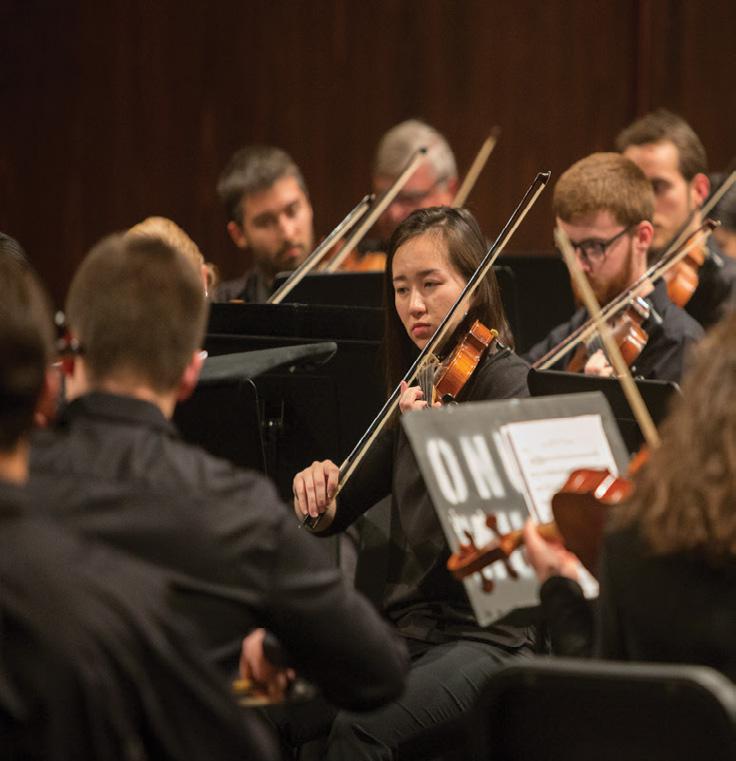
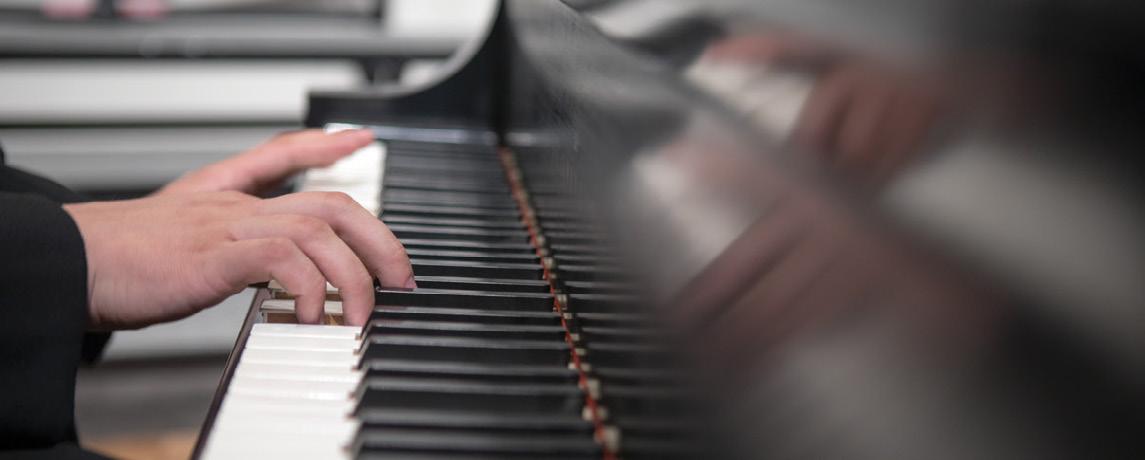
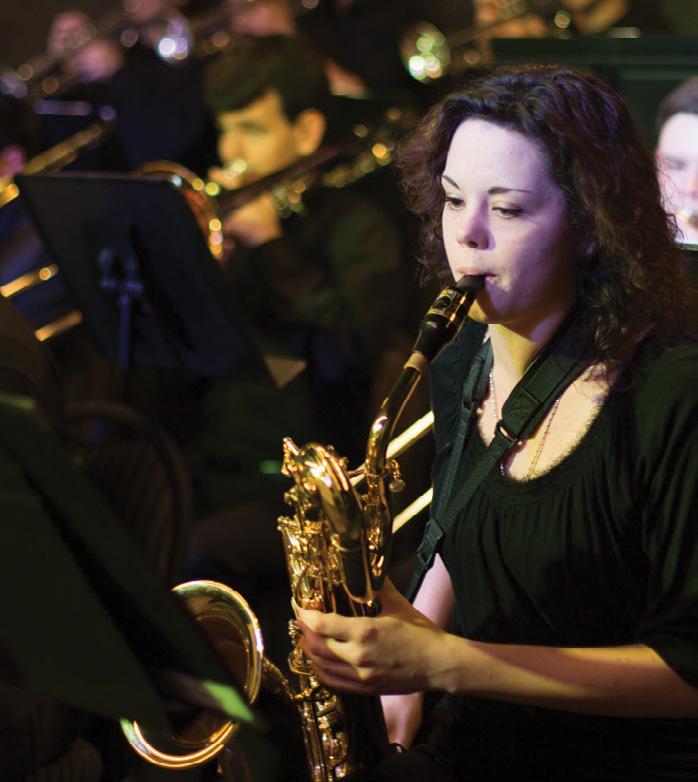


OHIO NORTHERN UNIVERSITY
Outstandingorchestra,choralandpianoprograms State-of-the-artExceptionallyaccomplishedanddedicatedfaculty facilities•Generousscholarships Explore O NU ’ sprogram s i n rocisum dnif dnoitiduata e s a t ONU.EDU/ ACADEMICS


 State and federal dollars through the Ohio Arts Council support artistic resources throughout the state.
State and federal dollars through the Ohio Arts Council support artistic resources throughout the state.
JARRED SMALL ARTS LEARNING COORDINATOR
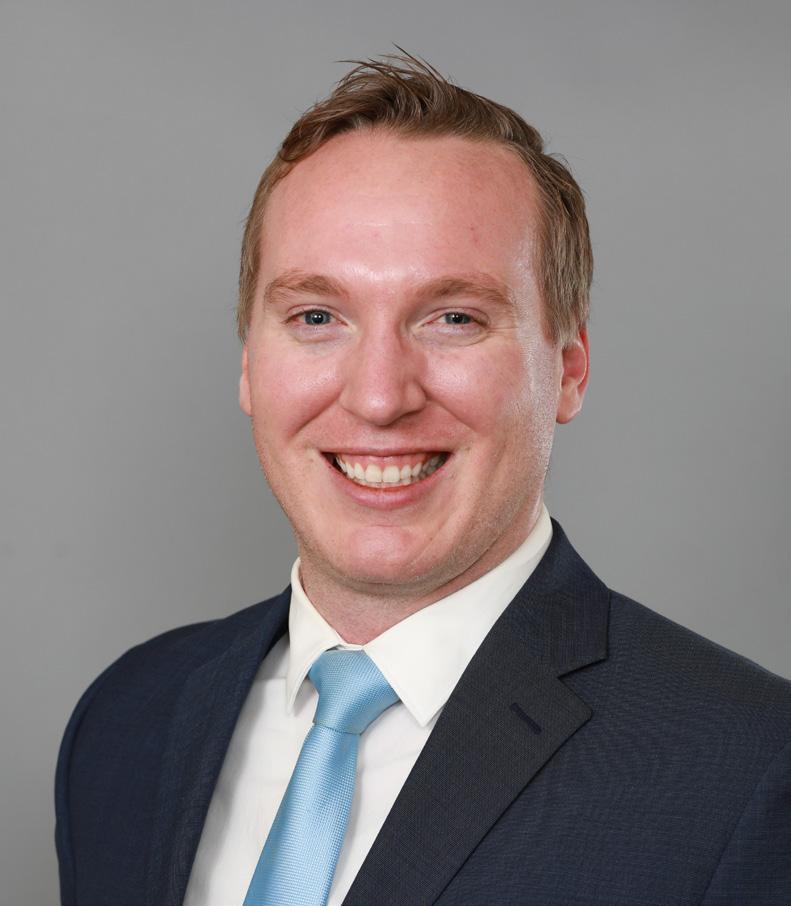
NEWS YOU CAN USE!
The Ohio Arts Council (OAC) is excited to highlight some updates and opportunities available to help support music educators as they continue to engage, inspire, and lead learners of all backgrounds and abilities through the school year.

NEW UPDATES FROM THE OHIO ARTS EDUCATION DATA PROJECT
The OAC, in collaboration with the Ohio Department of Education, Ohio Alliance for Arts Education, and Quadrant Research, is pleased to have recently released data detailing K-12 arts access, enrollment, and other figures from the 2020 and 2021 school years via the Ohio Arts Education Data Project interactive data dashboard. This data is combined with data dating since the 2016-17 school year to produce a longitudinal picture of the status of arts education in Ohio schools.
With the release of this new data, our ability to track and analyze trends now becomes easier and more meaningful as ever. For example, data available from the pre through late pandemic years shows trends that have long been suspected but that the data now confirms, namely that the pandemic has had a significant impact on access and enrollment figures for arts courses across discipline areas. Between the 2019-20 and 2020-21 school years, student enrollment in arts courses decreased by nearly eight percent across the state (a loss of almost
105,000 students) while students attending schools without any arts courses increased by nearly half a percent (or over 7,000 students).
You can read more about the Ohio Arts Education Data Project and explore the interactive data dashboard at: www.oac.ohio.gov/Resources/Ohio-Arts-Education-Data
GRANT APPLICATIONS AVAILABLE FOR 2023-2024 SCHOOL YEAR
While music educators wrap up the first half of the 2022-2023 school year, the OAC has geared up to accept grant applications supporting projects for the following 2023-2024 school year. As educators and administrators continue adjusting, adapting, and testing new and innovative methods of teaching and learning, the OAC invites you to consider ways in which available grant programs can support your plans and visions for next school year. You can view available grant programs and their Guidelines at www.oac.ohio.gov/grants.
One grant program currently accepting applications for projects occurring next school year is TeachArtsOhio. Now in its fifth year as a formal program of the agency, TeachArtsOhio is the OAC’s flagship school-based artist residency program. TeachArtsOhio brings schools and community organizations together with teaching artists to share engaging, personal, and high-quality arts learning experiences. Previous music focused TeachArtsOhio
DECEMBER 2022/JANUARY 2023 37
and federal dollars through the Ohio Arts Council support artistic resources throughout the state.
residencies have included work with professional singer/songwriters, recording artists, musical theatre professionals, hip hop artists, guitarists, African drum and dance ensembles, square dancing callers and fiddlers, and more. Teaching artists available to collaborate with schools can be found on the Ohio Teaching Artist Roster, available at www.oac.ohio. gov/Resources/Ohio-Teaching-Artist-Roster.
You can read more in the TeachArtsOhio Guidelines at www.oac.ohio.gov/grants (scroll down and click the “Arts Learning” accordion header). TeachArtsOhio applications for projects occurring during the 2023-2024 school year are due by February 1, 2023, and other OAC grant applications are due throughout late winter and early spring. For more information, contact Jarred Small via email ( jarred.small@oac.ohio.gov ) or phone (614-728-
4481). If you wish to begin a grant application, you must first contact the OAC for assistance in creating a profile in the OAC’s online grants system.
The OAC wishes all of Ohio’s music educators the very best as we collectively find ways to create, engage, innovate, and lead in pursuit of musical excellence.
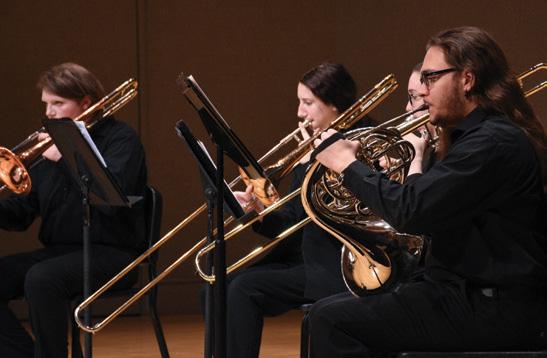
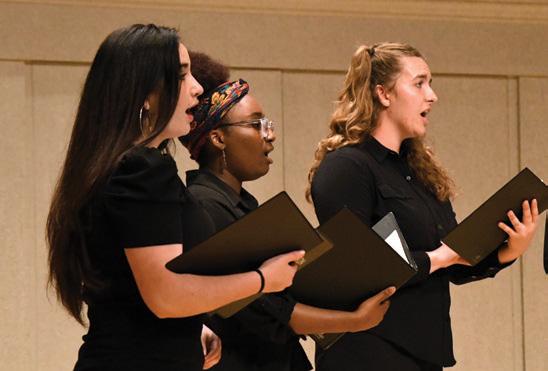

Jarred Small serves as arts learning coordinator at the Ohio Arts Council, a state agency that funds and supports quality arts experiences to strengthen Ohio communities culturally, educationally, and economically. He began his career as a music educator in the public schools of southwest Michigan, where he taught band, choir, orchestra, and guitar. Jarred holds a Bachelor of Music in instrumental music education from Western Michigan University and a Master of Arts in arts policy and administration from the Ohio State University.
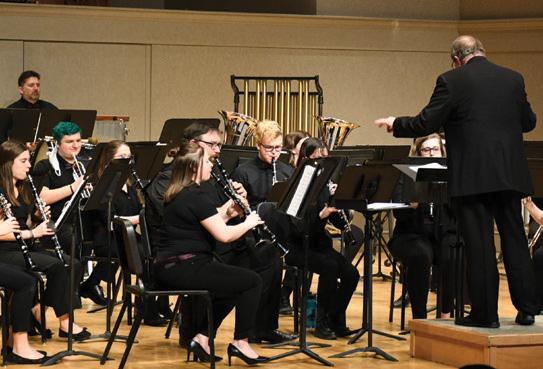
Play an instrument? Sing in a choir? AUDITION FOR SCHOLARSHIPS before march 31 CONTACT US TO LEARN MORE! Brianna Ferris 419-358-3254 ferrisb@bluffton.edu Visit www.bluffton.edu/music for application and requirements. Scholarships available for music majors and non-music majors, ranging from $1,000-$8,000, renewable for four years! 38 TRIAD
SCHOOL AND TEACHER DISCOUNTS
SIMPLE AND AFFORDABLE RENTALS
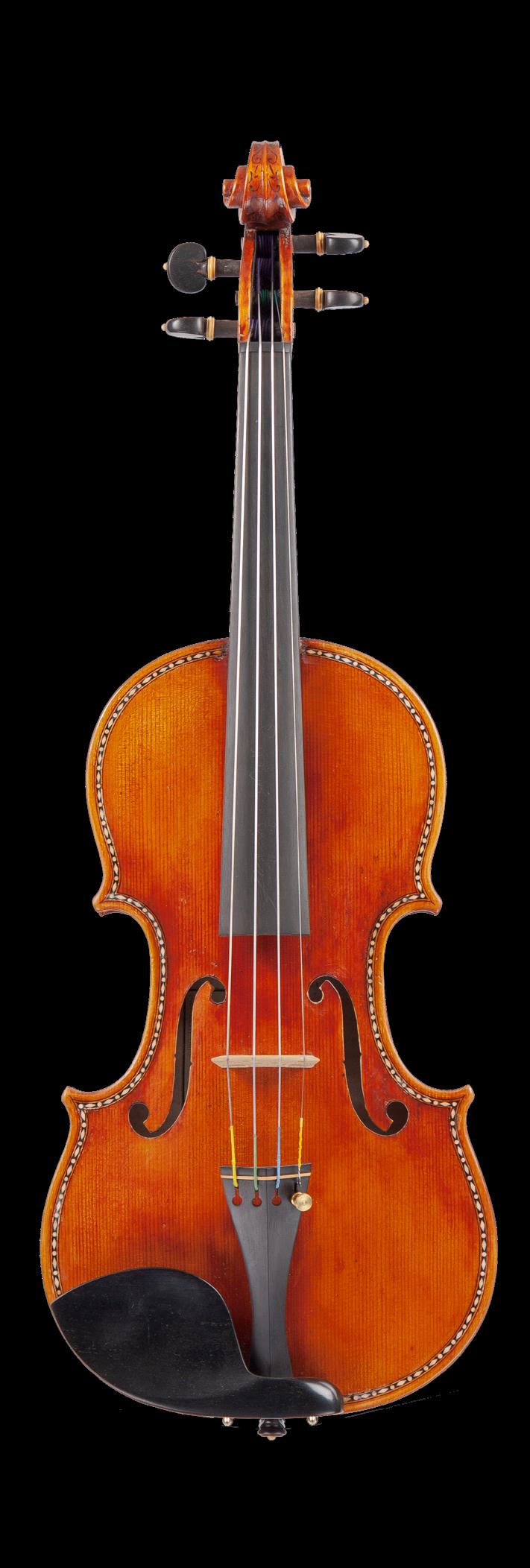
LEGENDARY EXPERIENCE TRUSTED QUALITY
We offer substantial discounts for school purchases as well as discounts on personal instruments for teachers. This is our way of thanking you for all you do for music education.
Rental programs should be easy to understand and provide exceptional value for students and parents. We rent high quality instruments at remarkably low prices and all of our rentals include maintenance, insurance and a starter kit at no additional cost. Baroque Violin Shop | 1038 W. North Bend Rd. Cincinnati, OH 45224 | 513-541-2000
PREMIER STRING INSTRUMENT RETAILER www.baroqueviolinshop.com/teacher
OHIO’S
DOUG O’NEAL, PRESIDENT
Ohio choral directors have an incredible opportunity coming this winter when the National American Choral Directors Association Conference comes to Cincinnati, Ohio! Held February 22-25, 2023, the ACDA National Conference is like no other.
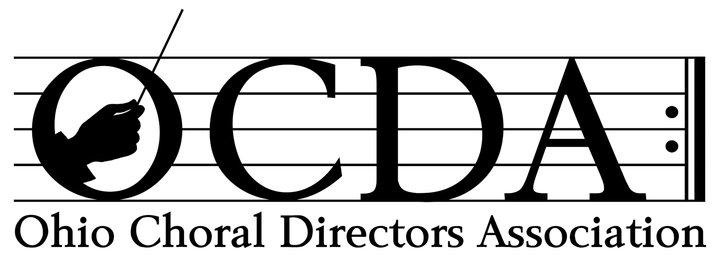
Having attended OMEA, ACDA Regional, GALA Choruses and ACDA National conferences, I can assure you that the experience is one you will greatly appreciate! Top clinicians in our field, outstanding performing ensembles, immersion choirs, incredible venues, and reading sessions will inspire you with trends and inspiration from across the country.
New to the conference this year are the Immersion Choirs. Conference attendees will have the opportunity to immerse themselves in a wealth of literature, styles and rehearsal techniques that may be different from our own traditions and experiences. Offered are Latino America, Black Diaspora, Indigenous People’s and Jazz Immersion Choirs.
The conference kicks off Tuesday, February 21st with a gala welcoming concert titled Your Hand and Mine. Held in the Aronoff Center, featured will be the Cincinnati Youth Choir (Robyn Reeves Lana, conductor), the Cincinnati Conservatory of Music Chamber Choir (Joe Miller), May Festival Chorus (Robert Porco), May Festival Youth Chorus (Matthew Swanson), Cincinnati Boychoir (Jason Alexander Holmes) and com-
bined Cincinnati-area high school choirs (Henry Leck, conductor).
In addition to many excellent performing groups from across the country, Ohio will be represented by four outstanding ensembles: Bowling Green State University Men’s Chorus (Rich Schnipke), Cleveland Chamber Choir (Scott MacPherson), Hilliard Bradley H.S. Shades of Blue (Jeremy Witt), and University of Akron Chamber Choir (Marie Bucoy-Calavan). Interest sessions will feature Jamie Lercher presenting on Major Maestras- Multi-Movement Choral Works by Women and Hope Milthaler presenting on Every Voice Has A Home: Cultural-Changing Student-Driven Voice Placement.
Registration is currently open at ACDA.org with a pre-registration discount until January 19, 2023. Also, don’t forget the OCDA Summer Conference 2023 this June 26-28, at Capital University.
Doug O’Neal serves as Director of Choirs at Olentangy Liberty High School where he conducts four concert and two ACAPOP choirs. A former music minister and conductor of Illuminati from the Columbus Gay Men’s Chorus, Doug also enjoys performing musical theater. He has degrees from Bowling Green State University and University of Dayton and has served as Co-Chair of the OMEA All-State Choir.
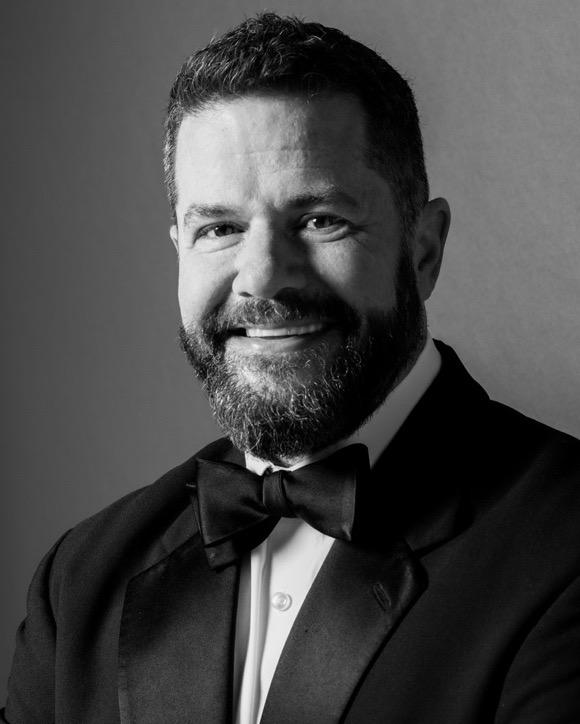
40 TRIAD
TU prepares students for the diversity of opportunities in today’s ever-changing professional music industry


Students
2022-2023
Audition Days
Dec. 9, 2022
Jan. 16, 27, Feb. 11, 20, 25, 2023
To schedule a scholarship audition, visit www.wittenberg.edu/music/audition.
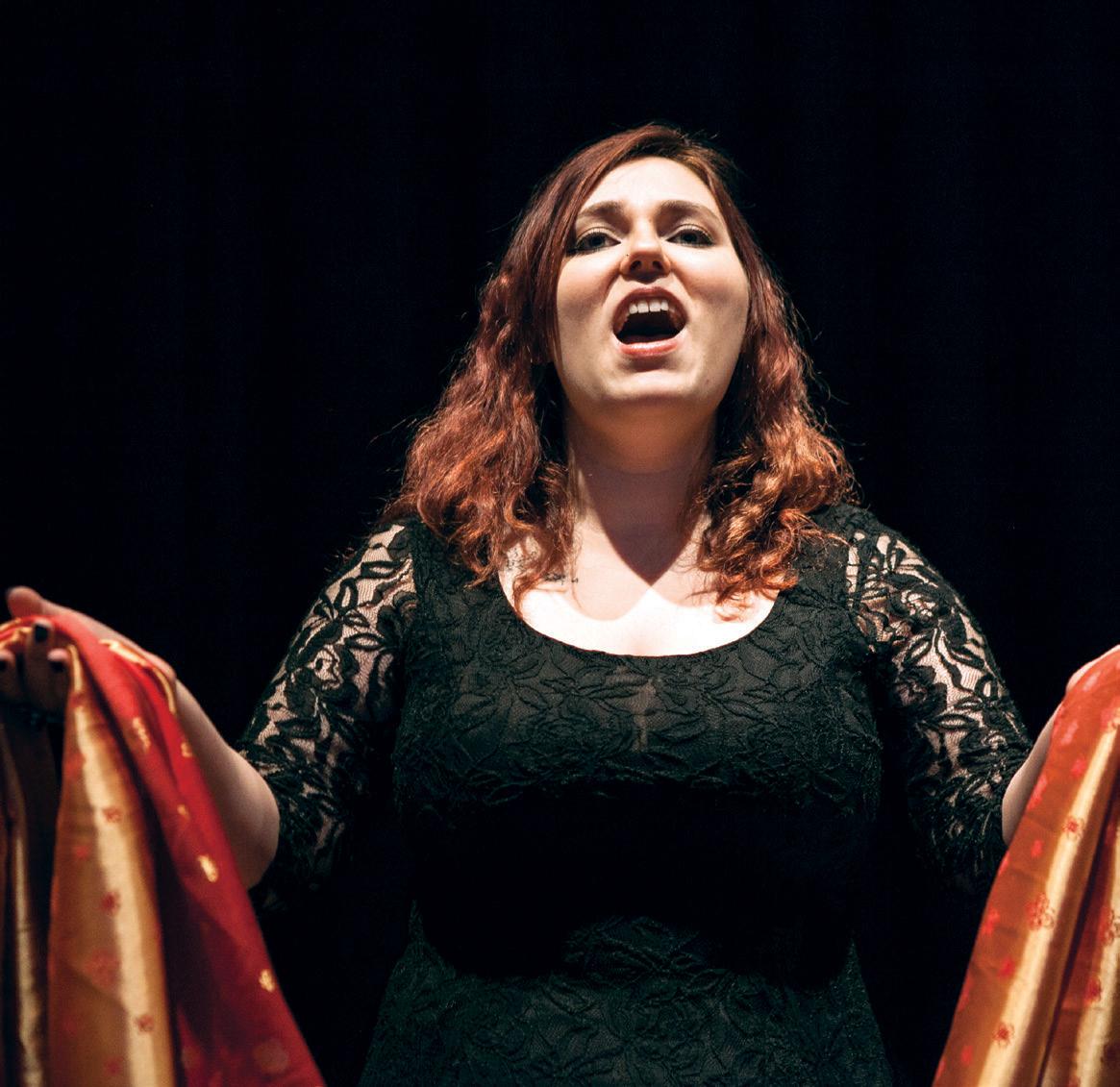
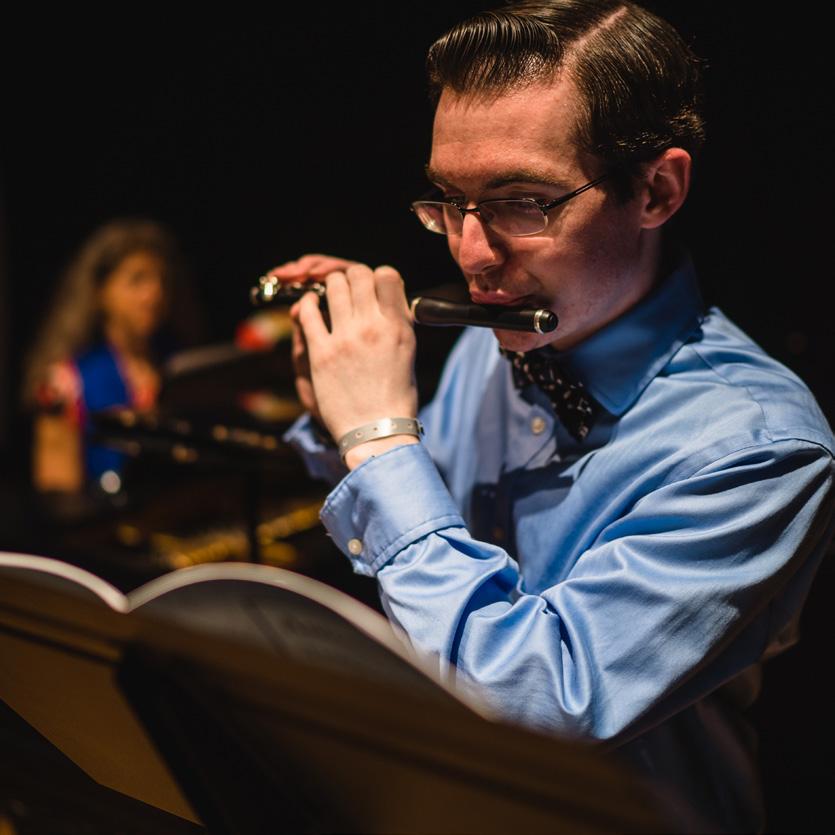

For more information about our music programs and scholarships, contact Dr. Daniel Kazez, dkazez@wittenberg.edu, Professor of Music and Music Audition Coordinator, tel. 937-327-7354 (or 800-677-7558, ext. 7354) WIT-MUS-017-Music_Triad_2022_v2.indd 1 8/5/22 12:31 PM
A T T I F F I N U N I V E R S I T Y
through
B R E A K Y O U R S O U N D B A R R I E R
a variety of practical coursework in performance, music technology, music entrepreneurship, a required internship and experience working in TU’s state-of-the-art professional recording studio. Tiffin University offers cutting-edge degrees in Commercial Music
can work on original music or
diverse
more
guitar, drums,
DECEMBER 2022/JANUARY 2023 41
Students pursuing all majors are eligible for substantial music scholarships
in
popular styles like rock, jazz, R&B, hip hop, gospel and
All students focus on one of these principal performance areas: voice, piano, bass,
beat making or songwriting. Scholarships are available for all arts participants, regardless of major. For info visit tiffin.edu/arts/scholarships or email arts@tiffin.edu.
MICHELLE LEASOR
Welcome everyone! My name is Michelle Leasor, and I am a member of the Ohio chapter of TI:METechnology In Music Education. We are looking forward to another great TI:ME Regional Conference at the OMEA PDC 2023. This year, TI:ME will be hosting almost 30 sessions at the OMEA PDC in February, and those sessions will be presenting best practices and innovations in transforming music education with technology.
ODE MUSIC STANDARDS
As many of you know, the Ohio Department of Education is finalizing the Fine Arts content standards. I had the privilege of serving as a member of the music standards working group again and will be presenting a session at the OMEA PDC on the new grades 6-8 music standards. If you are not yet aware, one of the sections of the preamble to the new standards will include a statement regarding technology in the music classroom: “It is implied that technology will be integrated into the music classroom. The arts allow opportunities for students to cultivate the types of essential thinking dispositions for life today, tomorrow and well into the future. Woven into our Enduring Understandings, students are encouraged to express their own personal sense of discipline, creativity and perseverance.” The 2012 music standards included some technology verbiage throughout, but because technology resources look different from district to district, it makes sense to have an overarching statement so that music educators can choose which technologies and resources work best for their own teaching situations.
TECHNOLOGY RESOURCES FOR MUSIC EDUCATORS

TI:ME is an organization dedicated to helping music educators maximize learning through technology. At our last meeting, we discussed the need for having a central location for technology resources. We decided that since many teachers already have many lesson ideas using technology that it would be good for us to put those in a shared Google drive and make those available to all music educators, regardless of TI:ME membership status. The COVID-19 pandemic made most of us both technology amateurs and experts in some ways, and while there is now a great deal of resources online, it can be daunting to sort through everything. Most of us don’t have the time to recreate lessons and activities with technology either, and someone else has probably already created an activity that you can use in your classroom. If you’d like to share technology-based lessons and see what others have created, check out our shared Google drive folder at https:// tinyurl.com/TIMEmusicresources. Feel free to share this with other music educators as well!
JOIN TI:ME AND GET CERTIFIED
TI:ME memberships can be renewed at https:// www.ti-me.org. The website is easy to navigate, and you will be able to view all the wonderful information and courses offered online through TI:ME. The TI:ME certification courses are being redesigned and should be made available for interested educators soon. TI:ME members here in Ohio are planning a music technology mini-conference at some point during the 2022-23 school year, with CEUs available for license renewal. In the meantime, if you have any questions about technology integration in your classroom - no matter what grade level or music subject - feel free to contact me and look through the shared resources described above.
42 TRIAD
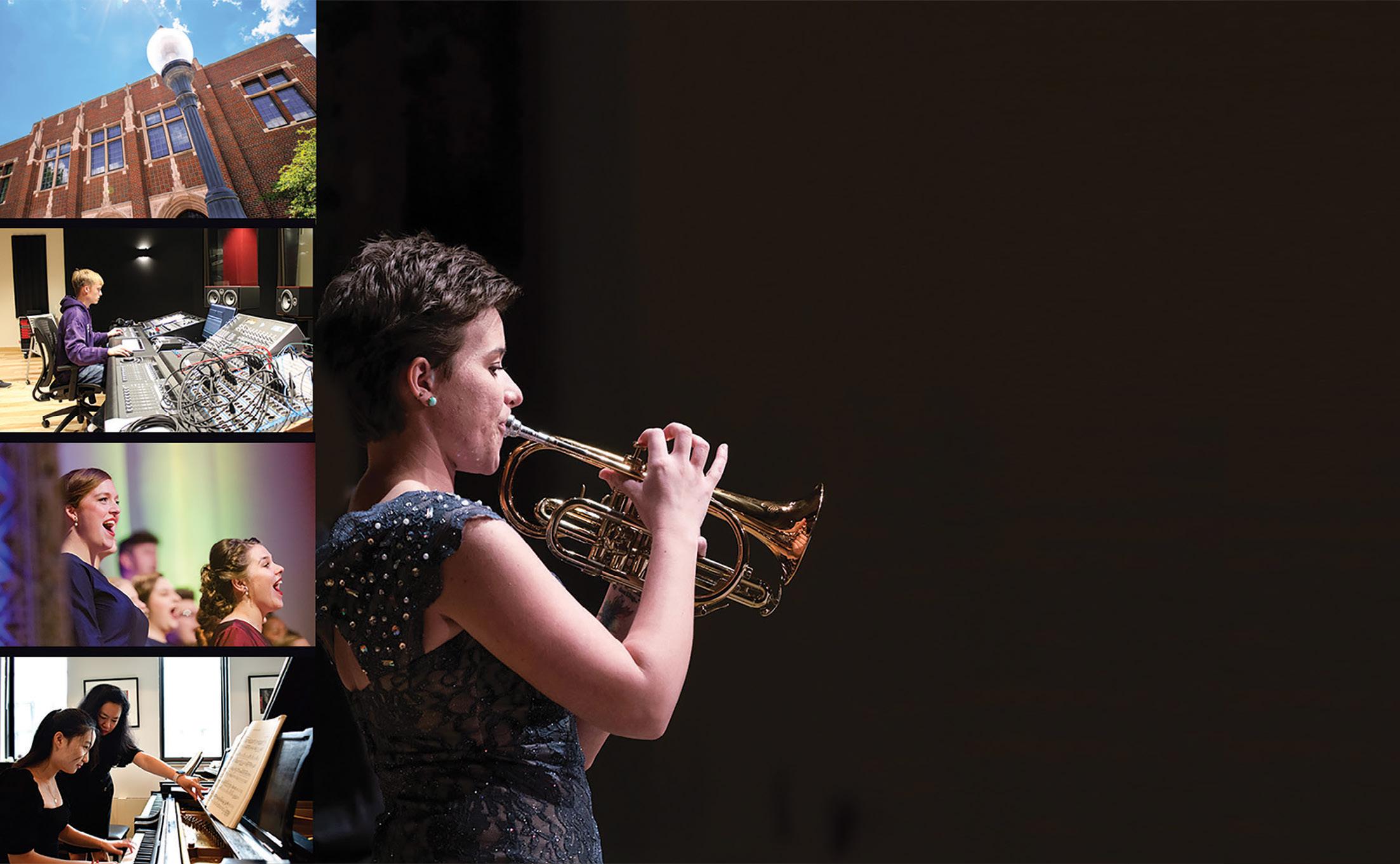

Capital University transforms lives by empowering an inclusive community of learners through engaging academic, co-curricular, and professional experiences. 2023 AUDITION DATES: Saturday, January 21, 2023 Friday, January 27, 2023 Monday, February 20, 2023 Friday, March 17, 2023 APPLY NOW To learn more about the Conservatory of Music, visit capital.edu/academics/conservatory/ EPIC PERFORMANCES DAILY. For more information, please visit CSUOHIO.EDU/MUSIC/. EXPLORE THE POSSIBILITIES SEE WHAT CSU MUSIC HAS TO OFFER YOU! Undergraduate Degree Programs BM - Composition, Music Education, Performance | BA - Music | Minor in Music Graduate Programs MM - Performance, Composition, Music Education | Professional Studies in Music Performance Certificate Program Post Baccalaureate K-12 Multiage License in Music Education Post Baccalaureate Non-Degree Program Music Talent Scholarships Awarded to majors and non-majors for the 2023 – 2024 Academic Year! DECEMBER 2022/JANUARY 2023 43
THE COLLEGE OF MUSICAL ARTS AT BGSU
Degrees Offered In: Jazz Studies
Music Composition Music Education Music History and Literature Music Performance Musical Arts World Music
Minors Offered In: Jazz Studies Music Music Industry Recording Technology
Become a part of our music community.
Undergraduates and graduates work side by side, and form lasting connections with their peers and faculty. By honoring traditions and embracing innovation, we prepare students for diverse musical lives and life-long career growth. The College is a major cultural resource for the campus and northwest Ohio.
We are excited to be able to offer a range of events accessible through our live stream page located in the EVENTS section of our website: BGSU.edu/discovermusic
Spring 2023 Admission: audition by December 2
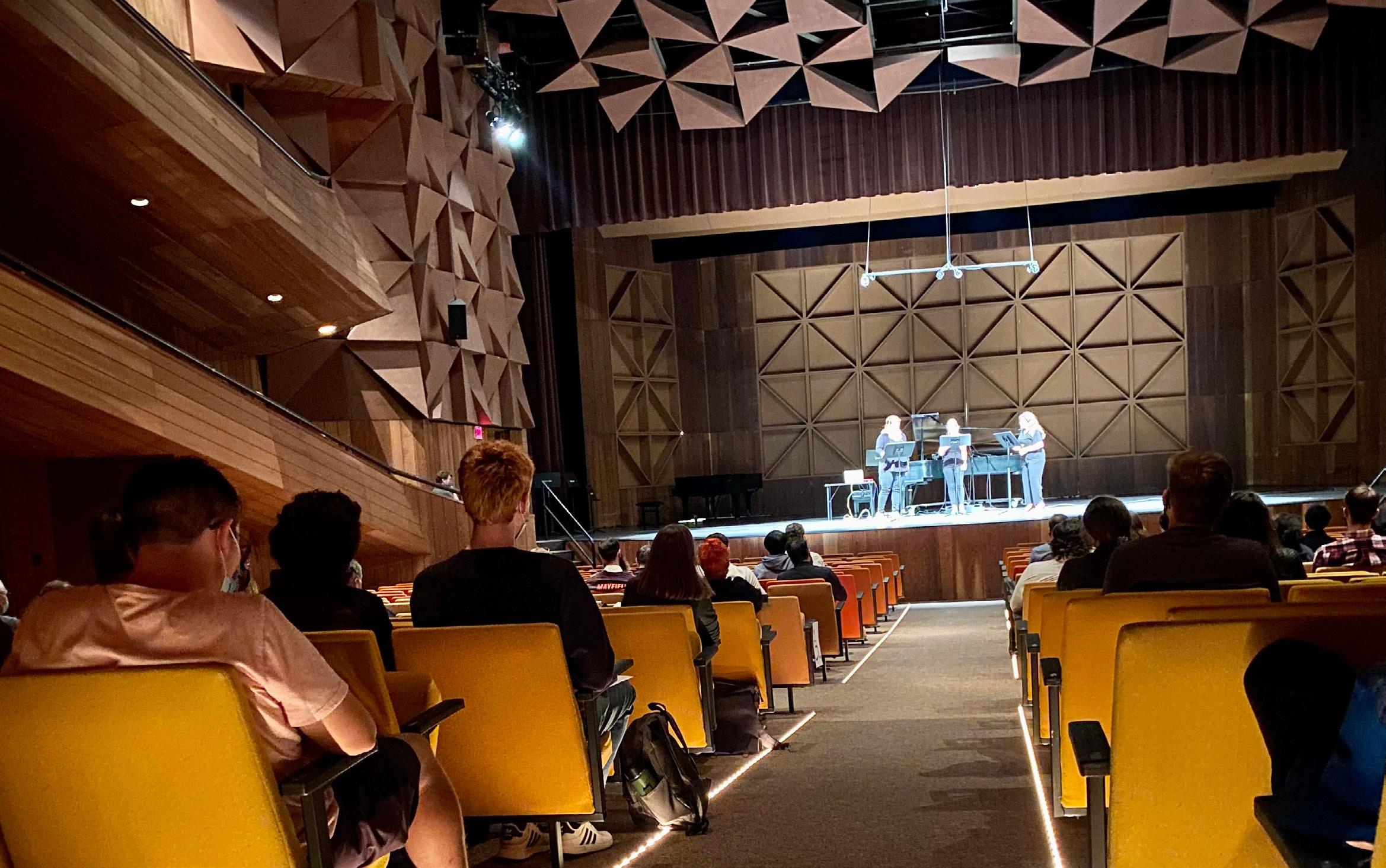
Fall 2023 Admission Audition Dates:
Saturday, January 21, 2023: in-person
Saturday, February 18: in-person
Friday, February 24: virtual Saturday, February 25: in-person (Music Scholarship deadline)
February 27 - March 1: DMA Auditions
Saturday, April 15: in-person Senior & Junior auditions
Visit us at bgsu.edu/discovermusic for information and registration.
Apply by January 18, 2023 for BGSU Academic Scholarships and financial aid consideration.
Audition by February 25, 2023 for talent-based music scholarship consideration.
musicadmissions@bgsu.edu (419) 372-8577

CASE WESTERN RESERVE UNIVERSITY
CWRU Music Education faculty Lisa Huisman Koops and Nate Kruse, and CWRU graduate students Jessica Steuver and Dennis Giotta, presented four research sessions and one poster session at the National Association for Music Education Biennial conference in November, 2022. The presentations represented several national and international research collaborations on the topics of career preparation of doctoral students, the experience of music teaching during COVID, mental health impact of participation in a choir during the pandemic, student
perceptions of expressed versus applied requirement in undergraduate music education curricula, and the influences and structuring of a home musical environment of a family with young children.
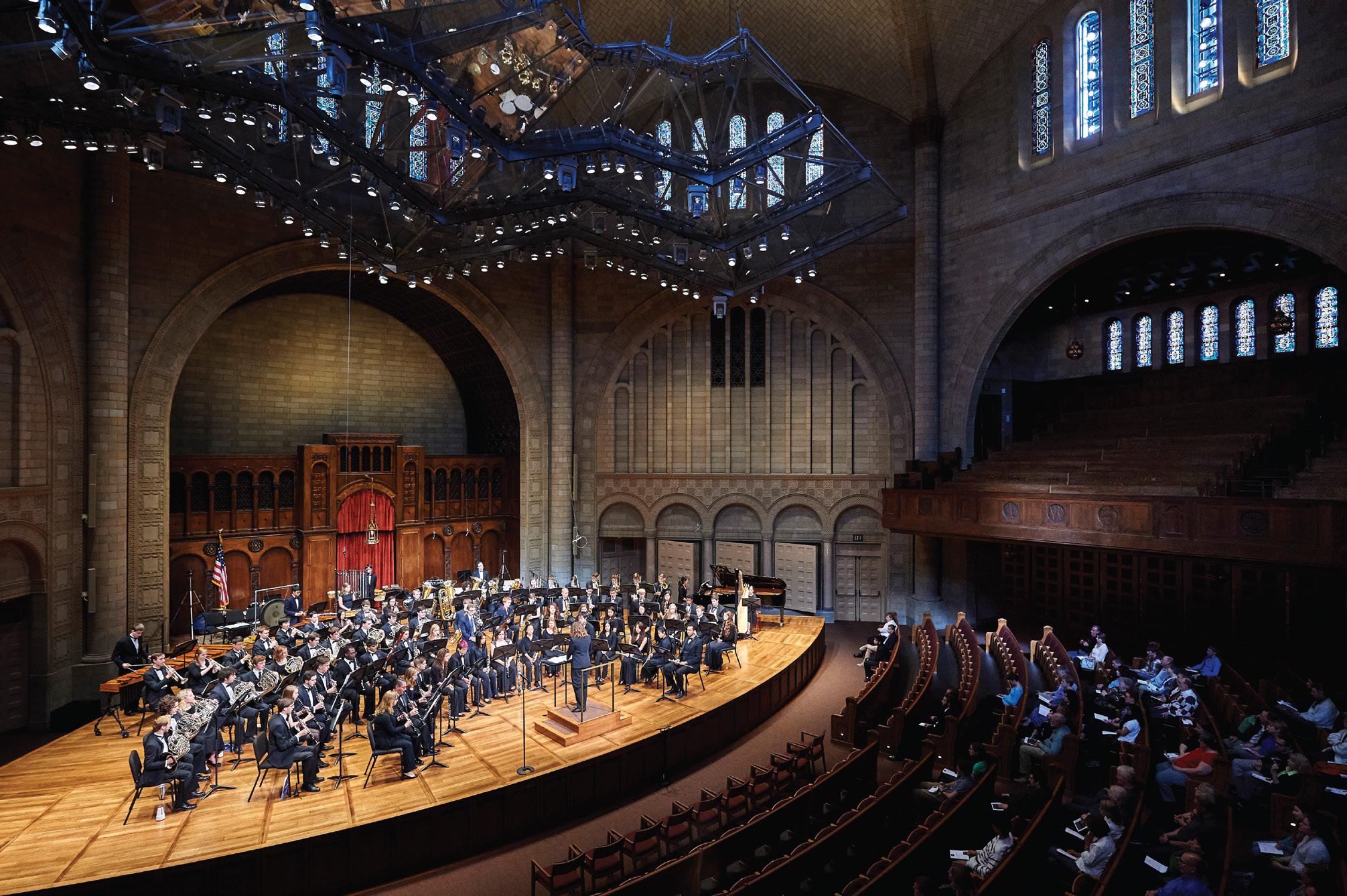
CWRU Music Education hosted Dr. Tami J. Draves, Professor of Music Education at the University of North Carolina at Greensboro for a residency in September, 2022. Dr. Draves led an undergraduate seminar in “Music Teaching Identity” and a graduate seminar entitled “Building Your Advisory Board.” She presented “Gender Dynamics in Schools of Music” for the Music Department Colloquium.
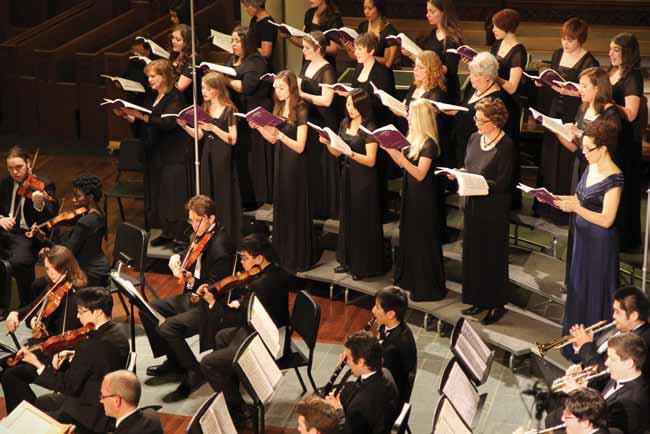
NEWS DECEMBER 2022/JANUARY 2023 45 music.case.edu p 216.368.2400 Undergraduate Programs BS in Music Education BA in Music Double Major Dual Degree (e.g., with Engineering BS) Minor in Music Graduate Programs MA in Music Education with Licensure (MAL) MA in Music Education PhD in Music Education PhD in Musicology MA in Historical Performance Practice (HPP) PhD in Musicology with HPP Concentration DMA in HPP think in sound
HIGHER EDUCATION
KENT STATE UNIVERSITY

Kent State’s music education division was well represented at the 2022 NAfME Biennial Conference in Baltimore, Maryland. Dr. Wendy Matthews and Dr. Janine Tiffe presented research along with doctoral students Eric Bable, Jeremy Poparad, Kristin Koterba, and Jacob Gibson.
Dr. Jay Dorfman, executive board member of the Society for Music Teacher Education, was responsible for organization of many of the SMTE components of the NAfME conference. Dr. Dorfman is currently working with students and teachers in the Columbus area on the inaugural Ohio Popular Music Collaborative, a select group of high school musicians who perform popular music styles.
Dr. Craig Resta will present his research at the NAfME Eastern Regional Conference, held in conjunction with NYSSMA, in April 2023.

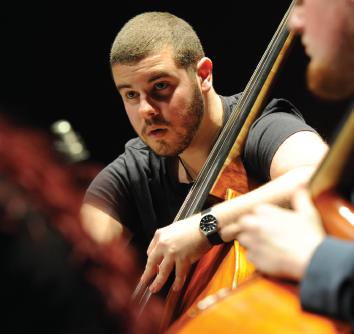
Dr. Jasmine Hines was recognized as October Featured Faculty of the Month by the Kent State Center for Teaching and Learning.
Dr. Butch Marshall attended the American Orff Schulwerk Association conference in Kansas City where he was part of a double session of demonstra-
tions on the pedagogy inspired by Dalcroze, Gordon, Kodály, and Orff. This fall, Dr. Marshall started a pilot program of interactive music and movement sessions for toddlers and caregivers. Two classes are providing musical enrichment for preschool children and their caregivers as well as a laboratory teaching experience for undergraduate music education majors. We hope to expand this program through the winter and spring
The Kent State Alumni Reception at the OMEA Conference will be held Friday, February 3rd from 6:15-7:30 at the Hyatt Hotel in the Hayes Room. We look forward to welcoming alumni and friends!
We are excited to again offer courses on the Kent Campus this summer for both graduate credit and Continuing Education Units. We are currently planning to offer Orff Levels 1-3, Music Learning Theory (Early Childhood), and a Conducting Workshop. For information or to register, please reach out to Dr. Marshall (hmarsha6@kent.edu). Watch our social media outlets (@KentStateMusicEducation on Facebook and Instagram) for announcements of dates and details for the exciting summer professional development opportunities.
46 TRIAD DEGREES OFFERED • Bachelor of Music Education • Bachelor of Music in Performance • Bachelor of Arts in Music otterbein.edu/music Otterbein is an accredited member of the National Association of Schools of Music (NASM) WE ARE building your future...one note at a time. 2022 - 2023 Audition Dates Sat., Jan. 14 Tue., Feb. 21 | Sat., Feb. 25 (Virtual) Sat., March 18 New for 2022 : Pathways in Commercial Music Contact: Christina Pelletier 614.823.1508 pelletier1@otterbein.edu
Welcome to COLUMBUS!
We look forward to seeing everyone at the 2023 Professional Development Conference.
Enjoy a performance by the Ohio State Symphonic Band, directed by Professor Scott Jones.
Ohio State alumni — SAVE THE DATE to join us for a special reception on Friday, Feb. 3 at 6:15 p.m. in the new Timashev Family Music Building Transportation will be provided.
UNDERGRADUATE AUDITION DAYS
for the 2023–24 academic year
Saturday, Jan. 21, 2023
No viola or concert percussion Saturday, Feb. 11, 2023
No oboe
SPRING VISIT DAY
Friday, April 14, 2023
Watch music.osu.edu for spring and summer Outreach program updates.
SCHOOL OF MUSIC
music.osu.edu
THE OHIO STATE UNIVERSITY
Eugenia Costa-Giomi, chair of the OMEA research commission, has several published works forthcoming in the Oxford Handbook of Early Childhood Music Learning and Development and the Proceedings of the 99th Annual Conference of the American College of Rehabilitation Medicine. She also recently presented research findings on early childhood music development and music cognition at the Biannual Conference of the National Association for Music Education, the 92nd State Convention of The Ohio Federation of Music Clubs, and a workshop organized by ProMusica and SproutFive Center for Early Childhood Innovation. Costa-Giomi has received a grant from The Ohio State University to explore optimal music-assisted interventions through a cognitive and brain sciences pilot grant.
David Hedgecoth recently presented several sessions at the Biannual Conference of the National Association for Music Education. The
publication of his new book, A Handbook for Charter School Music Educators, is forthcoming from GIA Publications, Inc. Last spring, Hedgecoth completed fieldwork in Salvador, Brazil as part of his Fulbright grant from the United States Department of State.
Jordan Saul, choral music education, and Jayne Wenner, general music education, have been appointed to Assistant Professor of Practice faculty lines.
The School of Music’s Youth Summer Music Programs — ten individual programs for middle and high school musicians — will return in 2023. Registration will open at music.osu.edu in February.
A reminder that the OMEA Ohio State University School of Music Friends and Alumni reception will be held from 5:30-7:30 p.m. on Friday, Feb. 3, 2023 in the new Timashev Family Music Building on the Ohio State campus. Transportation will be provided to and from the Columbus Convention Center.
DECEMBER 2022/JANUARY 2023 47



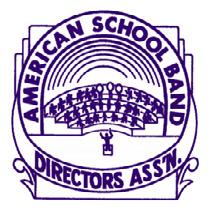
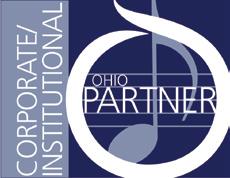

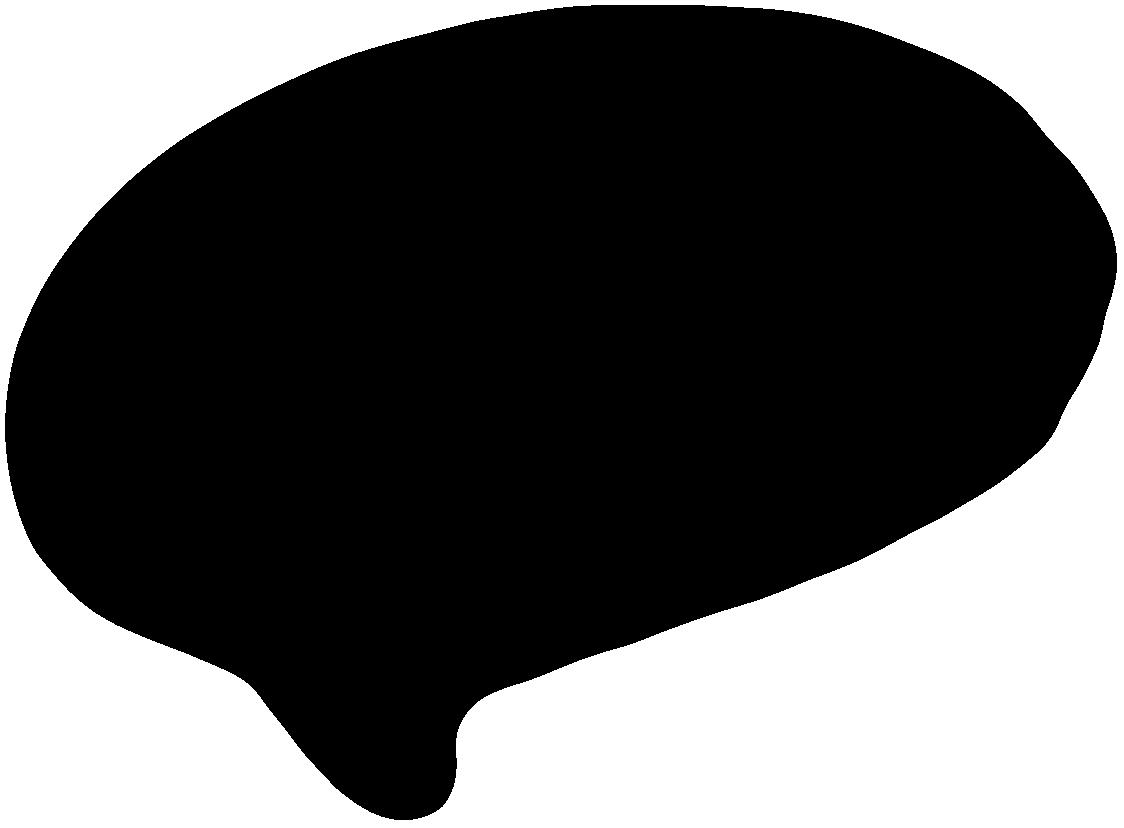
2023 OMEA PROFESSIONAL DEVELOPMENT CONFERENCE CLINICIANS BY AREA
ADVOCACY
Justin Caithaml
Laura Conrad
Cameron Dedrick
Paul Glader
Jarrod Hartzler
Martin Kral
Robert McClure
Lisa Michaels
Jeffrey Wensing
ADJUDICATED
EVENTS
Chris Carmean
Beth Hankins
Roberto Iriarte
JD Latorre
Heather Marsh-Myer
Kathy McIntosh
Thai Sribanditmongkol
Jeanne Wohlgamuth
BAND
Ryan Alexis
Wendi Bechtol-Davis
Joshua Boyer
Richard Canter
Ted Clark
Ishbah Cox Scott Edgar Jeffrey Emge
Kimberlee Goodman
Lindsey Goodman
Shelley Jagow
Lisa Jelle
Katherine Borst Jones
Catherine Lewis
Anthony Maeillo
Gretchen McNamara
Stephen Meyer Bryan Proksch
Robert Sheldon Alison Sincoff
Terry Staten
Erin Helgeson Torres
Josh VanGorder
James Vilseck
Darcy Vogt Williams
Elizabeth Yoder
Gail Zugger
CHORAL
Christine Bass
Francis Cathlina
Christopher Clark
Jay Dougherty
Libby Hainrihar
Krista Hart
Christopher Kiver Jami Lercher
Brandon Moss Bryan Nichols Jacob Reed
Sarah Santilli
Katie Silcott
Thai Sribanditmongkol
Paul Stewart Matthew Swope Kent Vandock Jeanne Wohlgamuth
CLASSROOM MANAGEMENT
Angela Ammerman
Patrice Croglio
Denise D’Arca
Jay Dougherty
Courtney Gazda Mary Robinson Robert Sheldon Josh VanGorder
CONDUCTING
Christine Bass
Francis Cathlina
Christopher Clark
Anthony Maeillo
Jose Rocha
Paul Stewart
C&A
Jeremy Davis
Rachael Fleischaker
BethAnn Hepburn
Laura Kitchel Michelle Leasor
Alyssa Miller
Robert Pavalko David Thompson
DEIA
Angela Ammerman
Rayna Brooks
Joanie Calem
Justin Caithaml
Courtney Gazda
Erin Hopkins Missy Strong
GENERAL MUSIC
Angela Ammerman
Scott Burstein
Marla Butke
Sue Casto
Michael Christiansen
Patrice Croglio
Allison Croskey Elizabeth Crumpler
Miranda Culver
Barbara Freedman
David Frego Brent Geyer
Dennis Giotta
Kelsey Giotta
Lisa Gruenhagen
Bethann Hepburn
Lauren Hodgson
Chet-Yeng Loong
Anna McClure
Robert McClure Evan McIntyre
Cody McPherson
David Mullins Christina Reardon Mary Robinson Christopher Russell Missy Strong Bryson Tarbet Martina Vasil Jayne Wenner
HIGHER ED/ TEACHER ED
Diane Ballard
Francis Cathlina David Hedgecoth
William Jobert Gretchen McNamara Marc Parulekar
Natalie Steele Royston Mark Sholl
JAZZ
Rachel Azbell
Joseph Carucci
Mercedes Chomos Zach Compston Michael Kamuf Mark Russo
MUSICAL THEATRE
Adam Albright
Sharon Crawford
Jason Falkofsky
Jennifer Garver
Michael Komperda Allison Paetz
Elaine Schweller-Snyder Jessica Steuver Jay White Lara Wolford
MULTICULTURAL
Angela Ammerman
Chet-Yeng Loong David Mullins Jayne Wenner
OCMEA
Austin Ahlborn Wendi Bechtol-Davis Jay Clark
Christopher Kiver Bradley Leyrer Brandon Moss Alyssa Schott Elizabeth Tracy Paul Young
ORCHESTRA
Adrienne Bedell
Stephen Benham
Brenda Brenner
Erin Broadhurst Michael Dolan David Eccles
BettyAnne Gottlieb
Beth Hankins
Kathleen Horvath
Chad Hutchinson
Roberto Iriarte
Jose Rocha Mark Rudoff
Erin Helgeson Torres Richard S. Webb
OTES
Rachael Fleischaker
Thomas Rounds
Christine Russell Margo Trinter Ann Usher William Young
RESEARCH
Miranda Culver
Rachael Fleischaker
Lisa Gruenhagen Phillip Hash Nathan Kruse Paul Louth
Evan McIntyre Elizabeth Yoder
SPECIAL LEARNERS
Stephen Benham
Kristen Brown
Joanie Calem
Denise D’Arca
Jeremy Davis Erin Hopkins
Lalene DyShere Kay Emily Kelley Veronica McMurray Josh Reynolds Cory Svette Bryson Tarbet Kent Vandock Lauren Wargelin
TI:ME CLINICIANS (TECHNOLOGY)
Barbara Freedman
Dennis Giotta
Bob Habersat
Michael Kamuf Will Kuhn
Brian Laasko Elyse Laux Michelle Leasor Jennifer LennoxChiudioni Mike Olander Tony Sauza Lesley Schultz Curtis Treadway Ryan VanBibber
*As of 12/12/2022
DECEMBER 2022/JANUARY 2023 49
OHIO MUSIC EDUCATION ASSOCIATION

2023 INDUSTRY SERVICE AWARD RECIPIENT
TERRY G. WALBURN – EXCEL DECORATORS
You are invited to the Opening Ceremony of the OMEA Exhibit Hall at the 2023 OMEA State Professional Development Conference to witness the Industry Service Award presentation. OMEA is pleased to make the award to TERRY WALBURN who will cut the ceremonial ribbon to open the Exhibit Hall for the 2023 OMEA Columbus Professional Development Conference.
This presentation will take place at the entrance to Exhibit Hall A of the GCCC on Thursday, February 2, 2023, at 12:55 p.m. Everyone is invited to attend this recognition of Terry for his exceptional contributions to music education and OMEA!
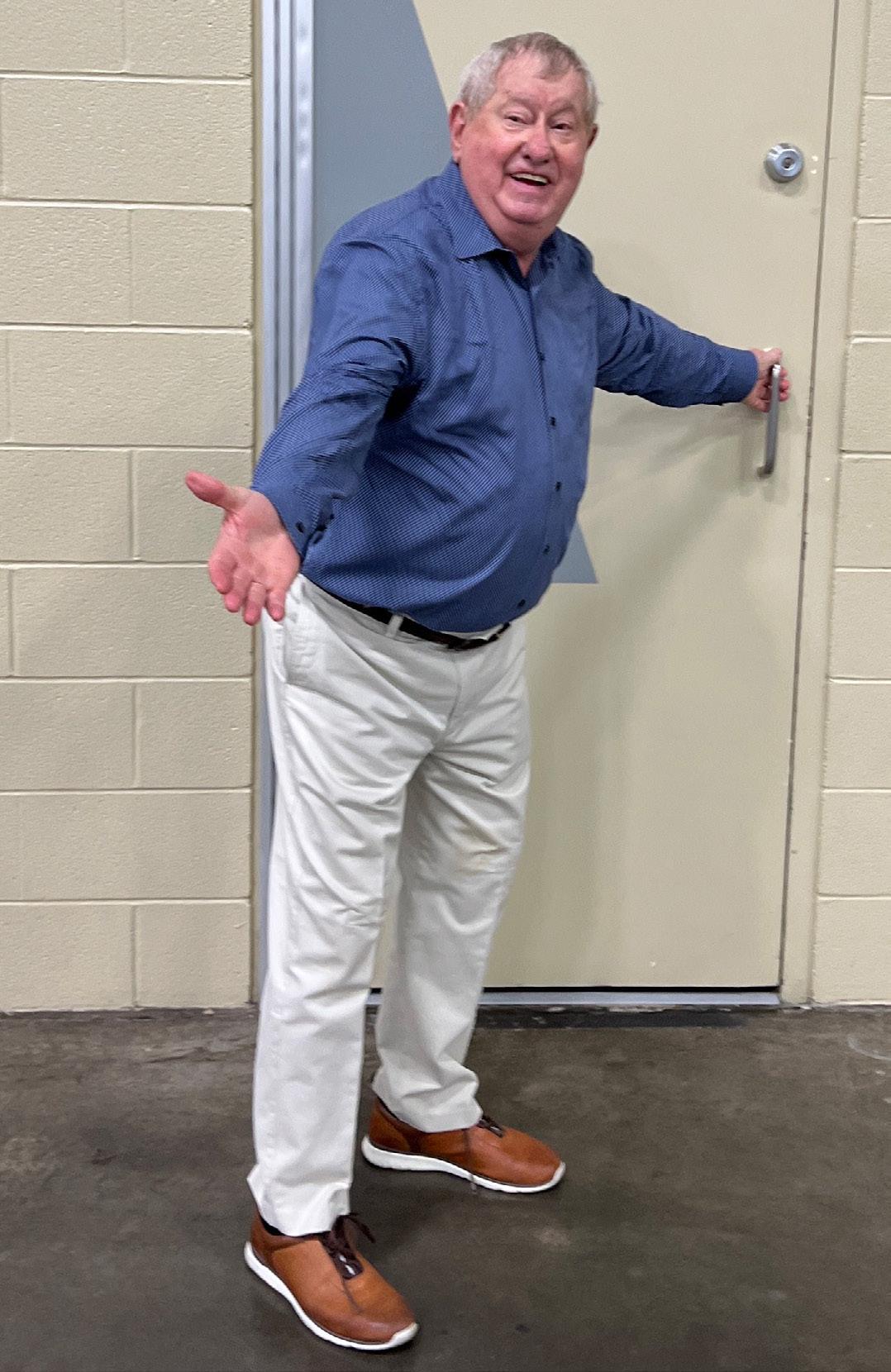
50 TRIAD
Music Education
at The College of Wooster
The College of Wooster offers comprehensive studies in Music Education, culminating in a Bachelor of Music Education degree and Ohio teacher licensure. Our students are mentored by expert musicians and educators, and graduate with a solid foundation of performance skills, content knowledge, and practical experience.
• Field experience in K-12 music classrooms during your first semester at Wooster.

• Small class sizes allow for personalized attention
• Expert training in instrumental, choral, and general music teaching techniques
• Perform each semester in ensembles dedicated to musical excellence
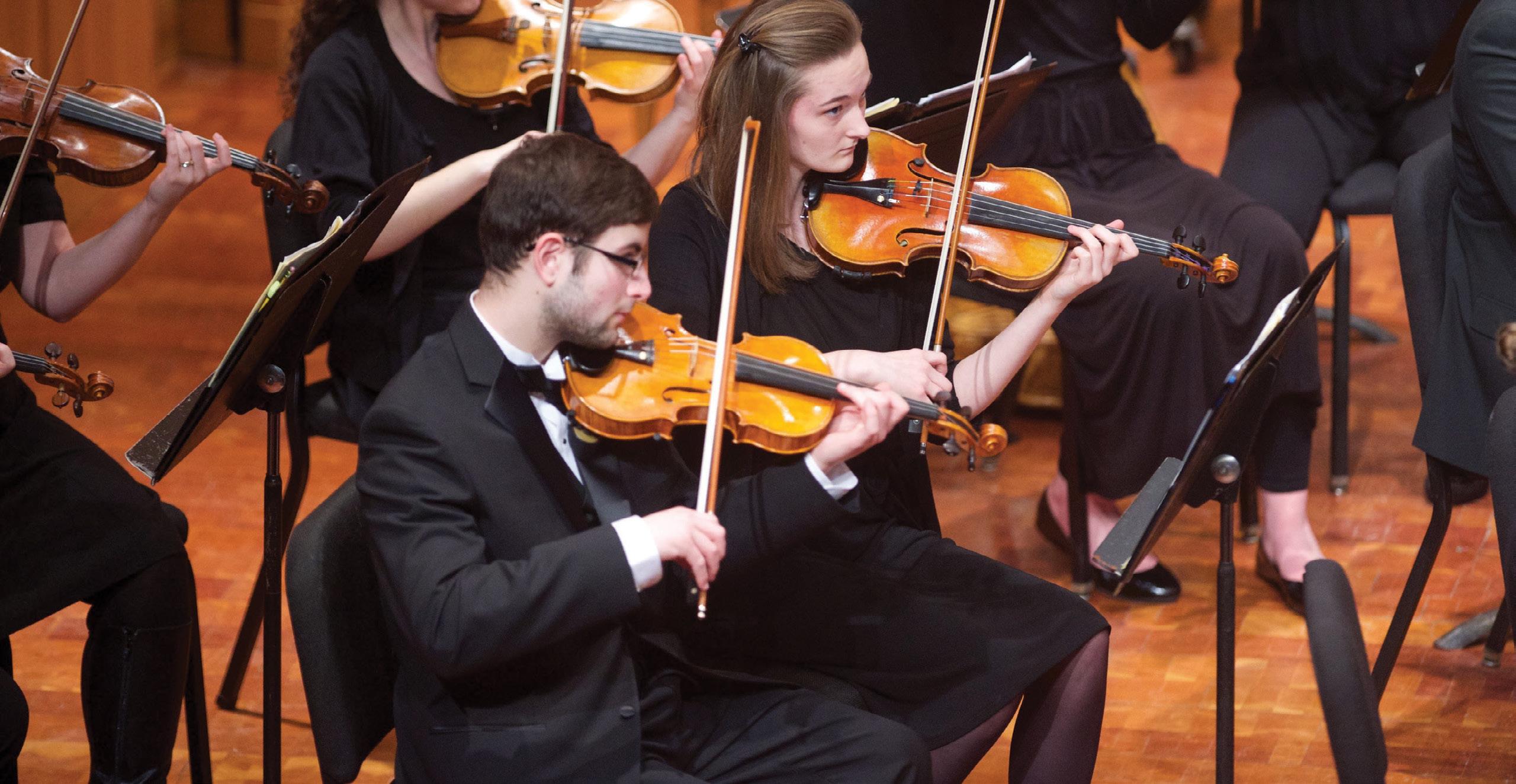
• Study in a rich liberal arts environment alongside diverse and supportive peers Visit: www.wooster.edu
Contact Dr. Lisa Wong, Associate Professor of Music at Lwong@wooster.edu
Independent Minds, Working Together www.wooster.edu


2023 OMEA PROFESSIONAL DEVELOPMENT PERFORMING ENSEMBLES
Bexley High School Vocal Ensemble - Amy Johnston Blosser
Boardman High School Jazz Ensemble 1 - Thomas Ruggieri
Bowling Green State University
Early Music Ensemble - Caroline Chin
Bowling Green State University Men’s Chorus - Richard Schnipke
Bowling Green State University’s Volaré - Emily Brown
Brass Band of Columbus - Brian Stevens
Capital University Chapel Choir - Lynda Hasseler
Case Western Reserve University Symphonic Winds - Ryan Scherber
Cincinnati Brass Band - Ben Chamberlain
Cleveland State University Chorale - Brian Bailey
Dayton Jazz Ensemble - Willie Morris
Dayton Philharmonic Youth Orchestra - Patrick Reynolds
Jackson High School Seven-thirty Big Band - Sean Monigold
JECO Intercollegiate Jazz Ensemble - Bobby Selvaggio
Kent State University Percussion Ensemble - Matthew Holm
Kings High School Symphonic Band - Brian McDonough
Lakeview Middle School 8th Grade Band - Tyler Husosky
Lakota West Symphonic Winds - Andrew Carr
Licking Heights Middle School Wind Ensemble - Doug Perry
Mentor High School Concert Mixed Choir - Adam Landry
Miami University Men’s Glee Club - Jeremy Jones
Miami University Symphony Orchestra - Ricardo Averbach
Nagel Middle School 8th Grade Orchestra - Jessica Cox
Northwest Middle School Select Choir - Conner Busby
Perry High School Percussion Ensemble - Darin Good
Perrysburg High School Select Strings - Michael Smith
Perrysburg High School Women’s Chorus - Shelvin Burns
Preble Shawnee Arrow Orff Ensemble - Cody McPherson
Springboro Wind Symphony - Joshua Baker
The Cleveland Youth Wind Symphony Group I - Daniel Crain
The Ohio State University Symphonic Band - Scott Jones
University of Dayton Chorale - Steven Hankle
Upper Arlington High School Vocal Ensemble - Brandon Moss
West Clermont High School Symphonic 1 - Brian Fischer
Wright State University Percussion Ensemble - Gerald Noble
DECEMBER 2022/JANUARY 2023 53
2023 OMEA PROFESSIONAL DEVELOPMENT TRADE SHOW EXHIBITORS AS OF 12/12/22
Akron, The University of Alfred Music
American School Band Directors Association
Antonio Violins and Ukuleles Appcompanist, LLC
Ashland University
Baldwin Wallace University Baroque Violin Shop
Beyond The Classroom Tour & Travel
Blue Lake Fine Arts Camp Bluffton University
Bob Rogers Travel
Bowling Green State University Buckeye Brass and Winds
Buddy Roger’s Music/Willis Music Buffet Crampon
Capital University Conservatory of Music Case Western Reserve University Cedar Point - Kings Island Central Michigan University Century Resources, LLC Chagrin Valley Music Cleveland State University College of Wooster Columbus Pro Percussion
Columbus Symphony Conn-Selmer, Inc. Crowne Excellence
Custom Fundraising Solutions Daybreak Music DeMoulin Brothers & Company Denison University
Diamond Fundraising Eastman
Educational Tours, Inc. Educational Travel Adventures Elizabethtown College Fermata LLC
Festivals of Music/Music in the Parks Fox Products Corporation
Fred J. Miller Inc.
Fruhauf Uniforms, Inc. GBC Fundraising
Germantown Violin Company GIA Publications, Inc.
Grand Tours, Inc.
Great Day! Tours & Charter Bus Service Grover/Trophy Music
Guardian Music and Group Travel Hang Ups Jewelry Designs
Heidelberg University School of Music & Theatre Indiana University Purdue University Fort Wayne J.W. Pepper Inc.
Jazz Education Connection of Ohio/Columbus Jazz Arts Group
Jupiter/Mapex/Majestic Keiser Productions Inc. Kent State University Keys to Imagination
Kincaid’s Is Music, Inc. Lourdes University Make Music, Inc. Malone University Marietta College Marigaux SAS Marshall University Messiah University Miami University Department of Music Middleton’s Recycle Mollard Conducting Batons, Inc. Mount Vernon Nazarene University MuseClass Music & Arts
Music Filing Solutions Music First Music is Elementary, Inc. Music Travel Consultants
Musical Gifts and Treasurers by Costume Holiday House Musical Resources
Musicians Repair Service
Muskingum University Nathan Woodwind Services
Noteworthy Tours, Inc.
Ohio Foundation for Music Education Ohio Northern University
Ohio State University School of Music, The Ohio University School of Music Ohio Wesleyan University Otterbein University
54 TRIAD
Ozark Delight Candy
Pageantry Innovations
Pearl Corporation
Pellegrino Music Center
Percussive Arts Society - Ohio Chapter Peripole Music Prodigies Academy
QuaverEd Rettig Music, Inc.
Royalton Music Center
Sabian LTD Sinclair College Snap! Mobile Solich Piano and Music Company
Sonor Orff-Nuvo
St. Louis Music
Stanbury Uniforms, LLC
Stanton’s Sheet Music State University of New York at Fredonia School of Music
Stoller Fundraising String Riffs
Summit Tour & Travel, Inc. Tiffin University Tone Deaf Comics
University of Cincinnati University of Dayton University of Mount Union University of Toledo, The UR Tours and Events

US Army Bands uTheory Wenger Corporation West Music Company Wittenberg University Woodsy’s Music WorldStrides & Brightspark Travel Wright State University School of Music Yamaha Corporation of America
Youngstown State University - Dana School of Music

2023 OMEA PROFESSIONAL DEVELOPMENT TRADE SHOW EXHIBITORS AS OF 12/12/22 DECEMBER 2022/JANUARY 2023 55 PERSONALIZING LEARNING Real World Experience Sing with the Toledo Opera, perform in a jazz club, attend a Toledo Symphony performance, and intern in a professional recording studio. Located in a culturally rich Toledo region, UToledo provides opportunities for music students to hone their skills. You Are Not Just a Number Professional training in a moderate-sized department where teachers know you by name. Scholarships Available Highly competitive scholarships are available for talented students. Apply for an audition online at utoledo.edu/al/svpa/music/degrees/audition.html CONTACT US 419.530.2448 n utoledo.edu/al/svpa/music/



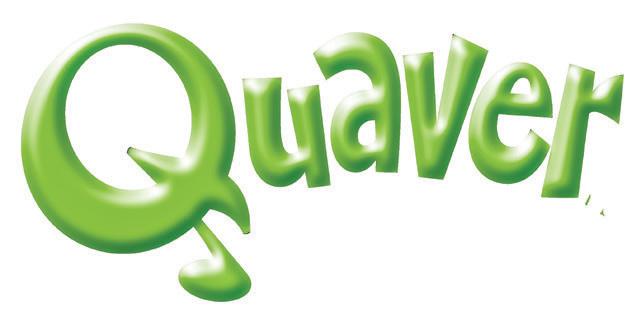

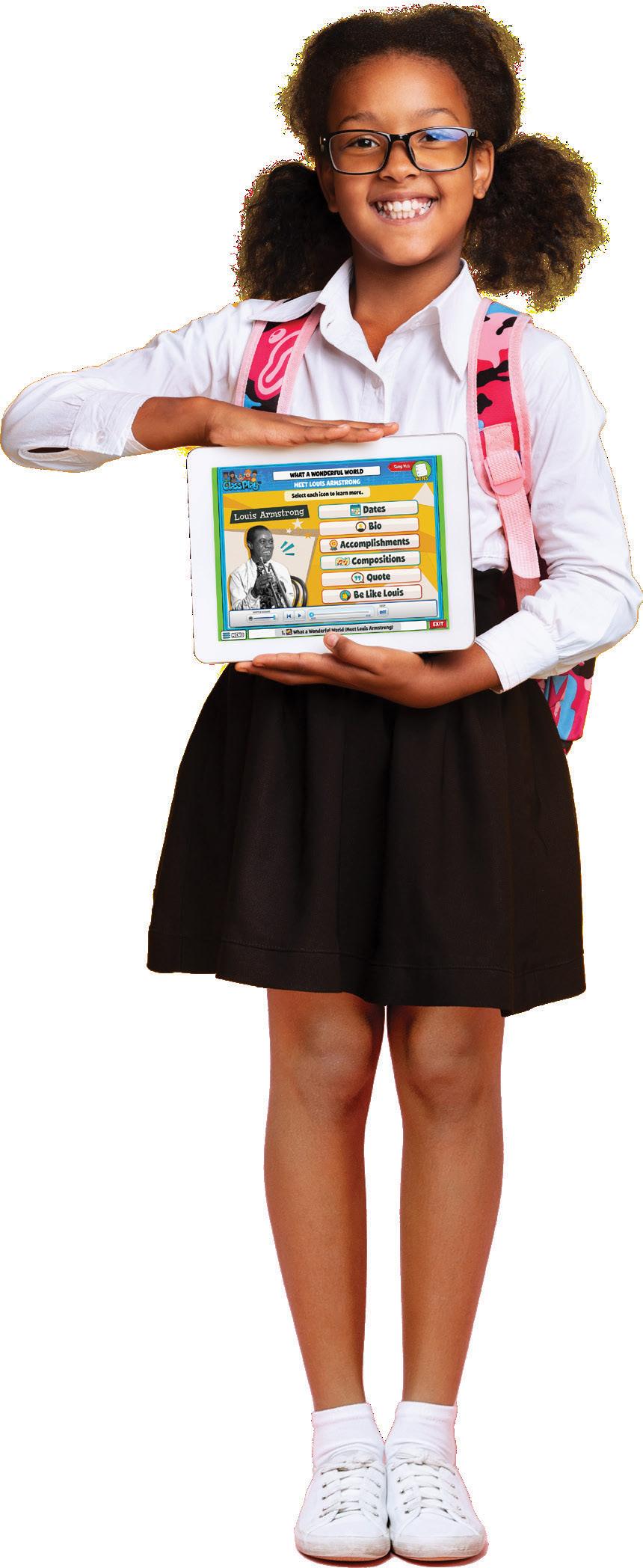





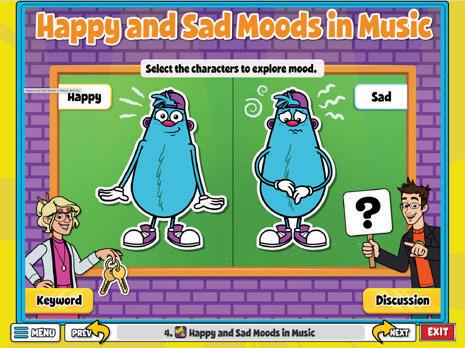

Get started now at QuaverEd.com/Preview QuaverMusic is always growing. We're proud to partner with teachers across the Buckeye State. Copyright © MMXXII, by QuaverEd, Inc. All rights reserved. NEW: • Songs • Lessons • Activities • Student Avatars • and More! 56 TRIAD
OMEA RESEARCH POSTER SESSION POSTER PRESENTERS
FRIDAY, FEBRUARY 3, 2022: 12:30– 1:30 PM - HYATT UNION BALLROOM PRE-FUNCTION SESSION CHAIR: PAUL LOUTH
Neal Clark
A Music Learning Theory-Based Curriculum for the Modern Instrumentalist (University of Cincinnati)
Jake Gibson
Making Culturally Responsive Choices: Informed Considerations in Selecting Band Repertoire (Kent State University)
Lisa M. Heinrich
Situational Interest of Children in K-5 Music Classes (Kent State University)
Marsha Croskey Kincade
Women High School Band Directors’ Perceptions of the Relationship Between Their Gender and Professional Identities (Case Western Reserve University)
Casey Knox Mental Health Matters: Understanding Well-being and Burnout in Music Educators (Ohio University)
Brian Laakso
Elite Musicianship: How Death Metal Musicians Create Their Craft (Kent State University)
Eugenia Costa-Giomi & Florencia Ontiveros
Repetitions and Variations of Song During the First Three Years of Life: How Eva Learned to Sing (The Ohio State University)
Alyssa Perry
Women as Wind Band Conductors: Examining Lived Experiences of Professionals in the Field (Ohio University)
Nick Riley
Repertoire Selection Bias: An Analysis of Ohio High School Band Directors’ Required Piece Selections for OMEA Large Group Adjudicated Event (The Ohio State University)
Martin Ryan Songwriting Teaching Approaches in Ireland (Kent State University)
David Hedgecoth & Margaret Young Responses to COVID-19: Case Studies from the Ohio Urban Eight (The Ohio State University & Ohio State University Lima)
DECEMBER 2022/JANUARY 2023 57
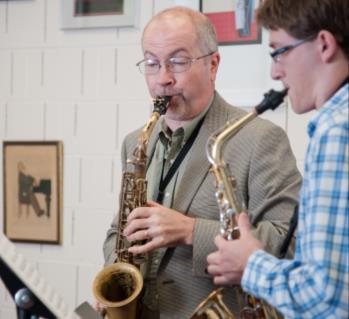


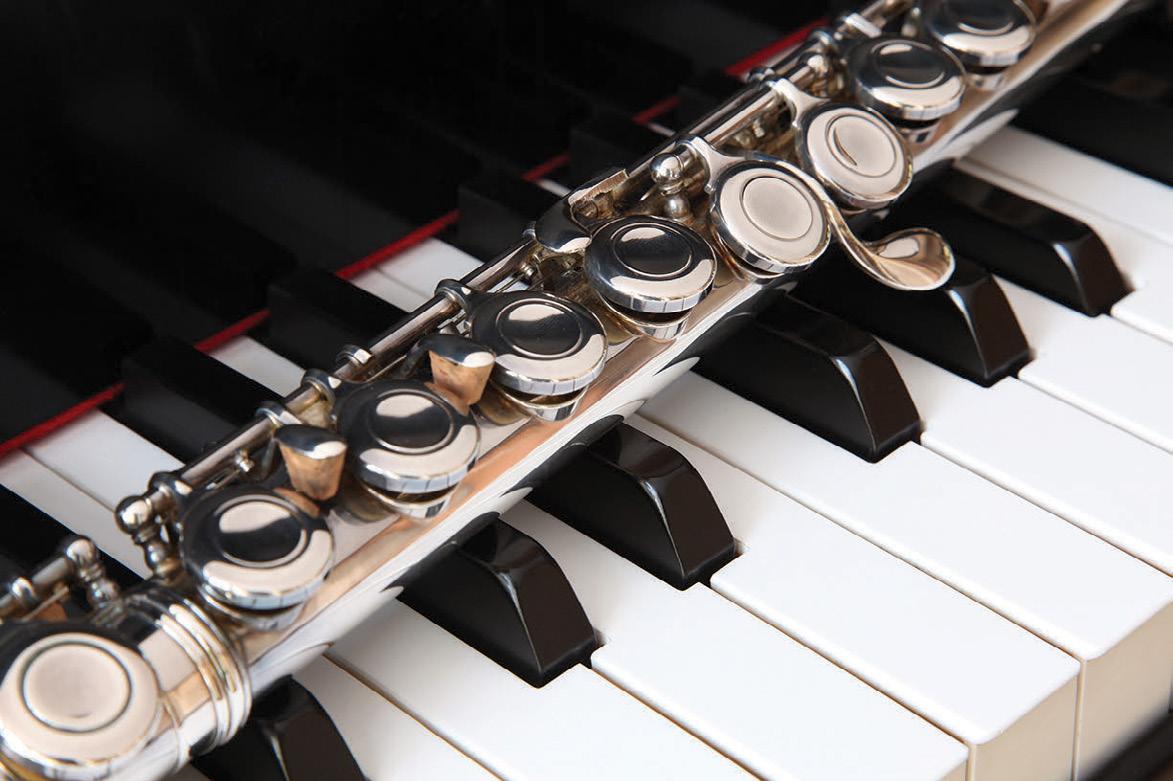
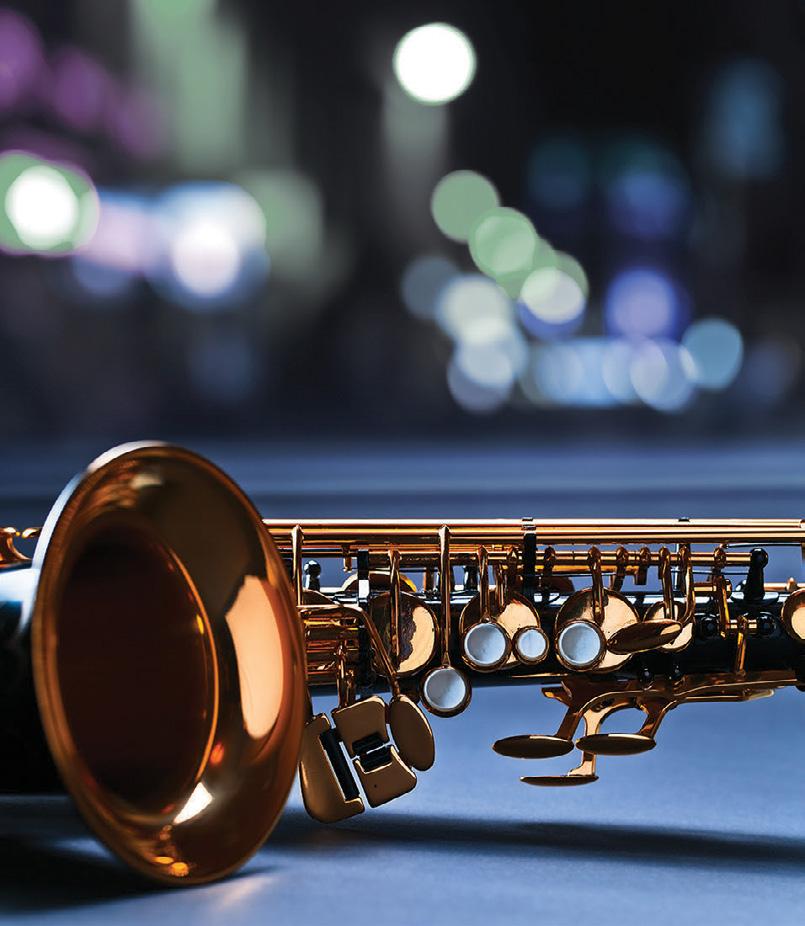
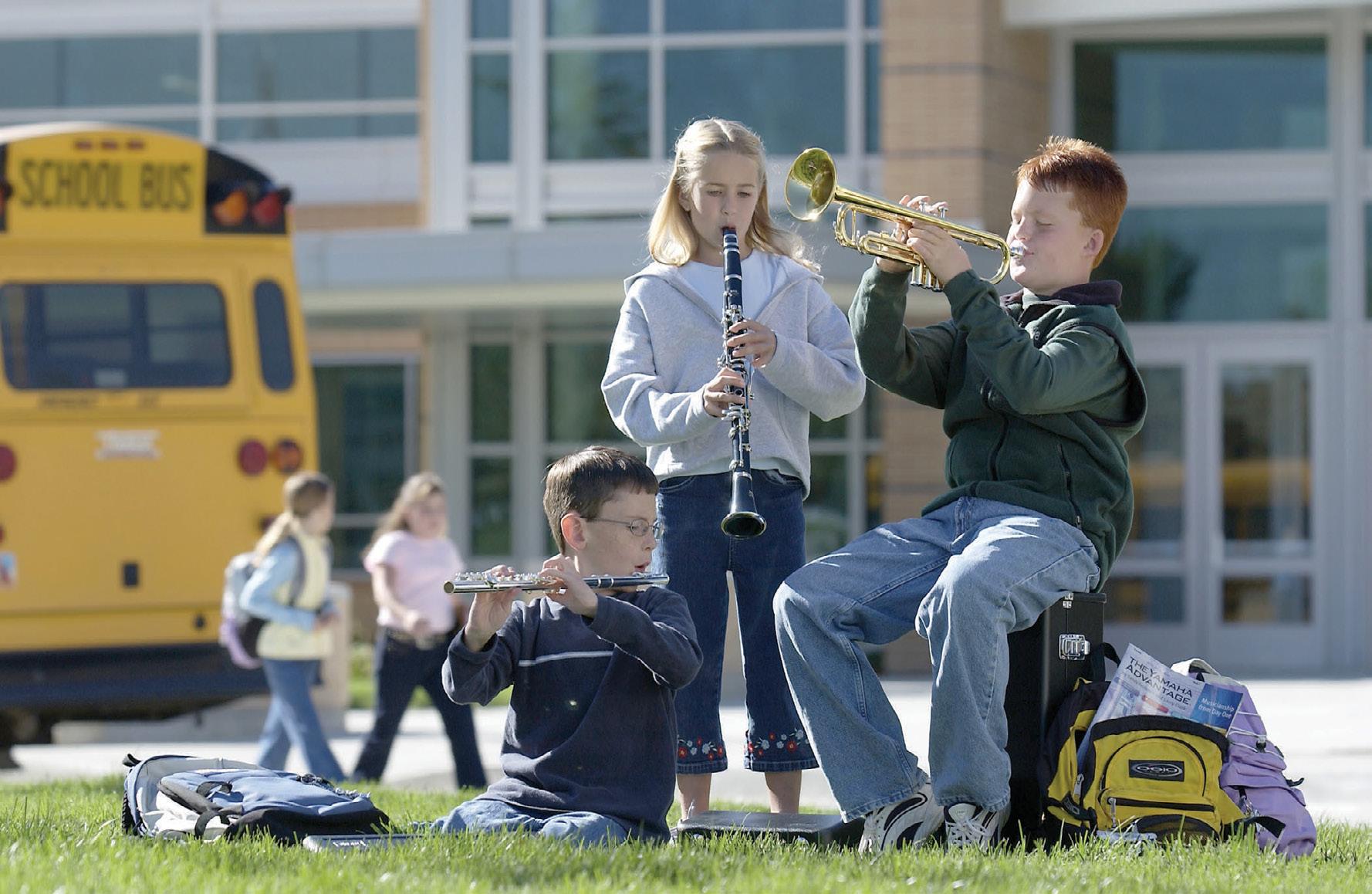
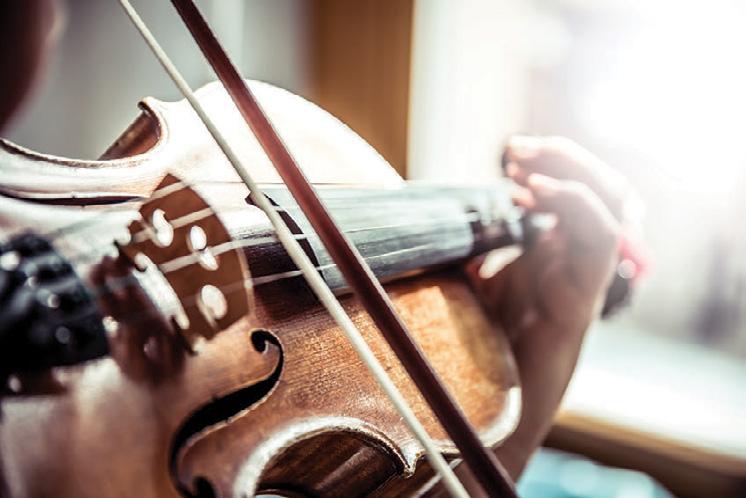
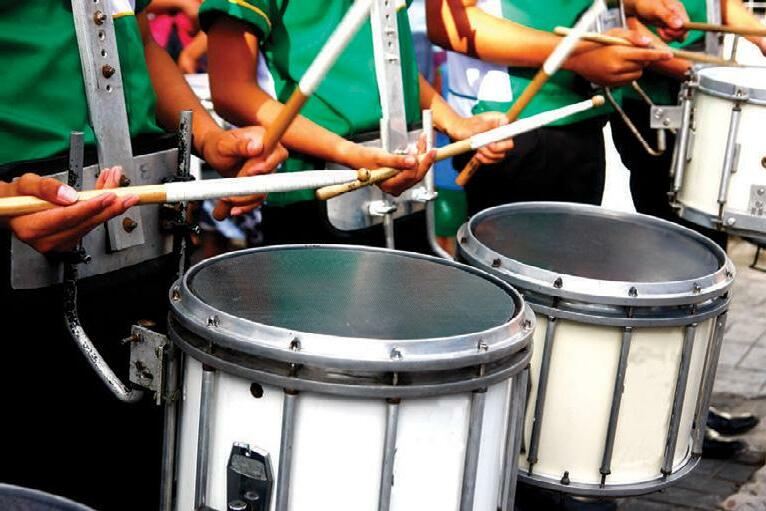
WWW.ASHLAND.EDU/MUSIC o:419.289.5100 e:music@ashland.edu Scholarships available to music majors, minors, and ensemble participants! Since 2011 usic Store Ohio’s only Music • Rentals • Lessons • Repairs • Kindermusik • Accessories Competitive School Bids • Music Therapy • Pro Instruments 10167 Royalton Rd. North Royalton, OH 44133 (440) 237-9400 www.royaltonmusic.com 58 TRIAD
OHIO FOUNDATION FOR MUSIC EDUCATION
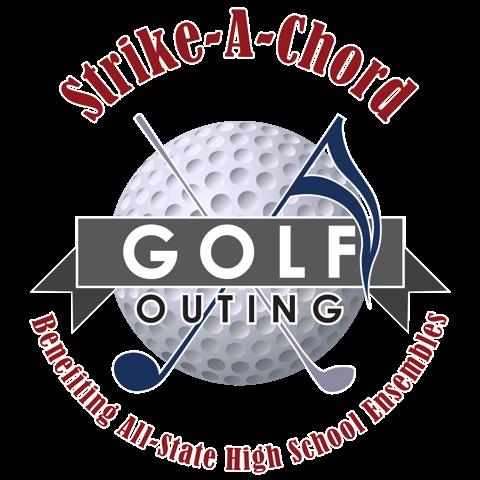
DECEMBER 2022/JANUARY 2023 59
4TH ANNUAL “STRIKE -A-CHORD” GOLF OUTING
MajorSponsors GolfGiftSponsor: Music Travel Consultants LunchSponsor: Bob Rogers Travel PuttingCompetitionSponsor: Buddy Roger’s Music/Willis Music HoleSponsors: Educational Tours, Inc. Englefield Business Advisors Kincaid’s Music Patricia Meeks Music Travel Consultants Premier Tour & Travel Noteworthy Tours OMEA Trustees RedOne Realty Pellegrino Music Center OFME Board of Directors Rettig Music, Inc. United Heartland Insurance Jay & Amy Wardeska Worldstrides Performing Arts
Wardeska,
Director,
Association
Golf
NEXT
DATE
SpecialTHANKStothefollowingSponsors:
Jay
Executive
Ohio Music Education
Dave Koehler, Board President, Ohio Foundation for Music Education OFME
Committee: Kathy McGrady, Phil Louden, and Rob Cintron Brian Bridges, Manager at Chapel Hill Golf Course & Staff
YEAR’S
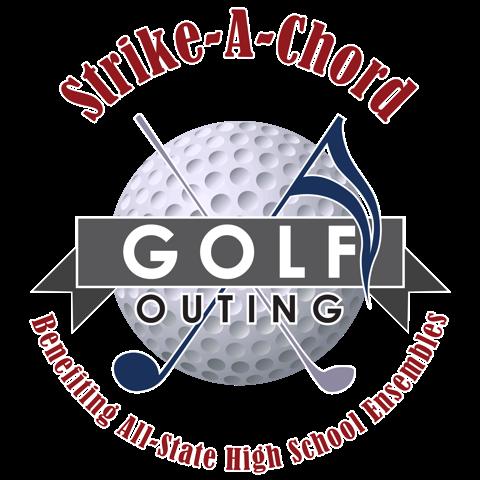
60 TRIAD OHIO FOUNDATION FOR MUSIC EDUCATION 5TH ANNUAL MONDAY – JUNE 12, 2023 9:30AM–2:30PM CHAPEL HILL GOLF COURSE 7516 JOHNSTOWN ROAD MT VERNON, OHIO 43050
EVEN TEACHERS NEED TEACHERS
As an educator, one of the most impactful ways to improve is by educating yourself. That’s why the Yamaha Educator Suite (YES) helps music teachers access professional development opportunities, music teacher resources, program health support, advocacy assistance and more. YES brings you a network of like-minded teachers, experts and professionals, who want to help you achieve your goals. Let us help you raise the bar. Go to Yamaha.io/educatorsTRI











































































































































































































 State and federal dollars through the Ohio Arts Council support artistic resources throughout the state.
State and federal dollars through the Ohio Arts Council support artistic resources throughout the state.






























































